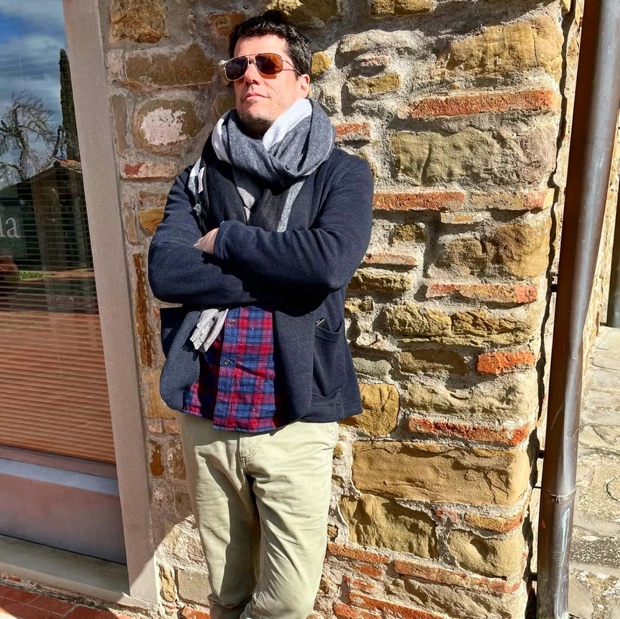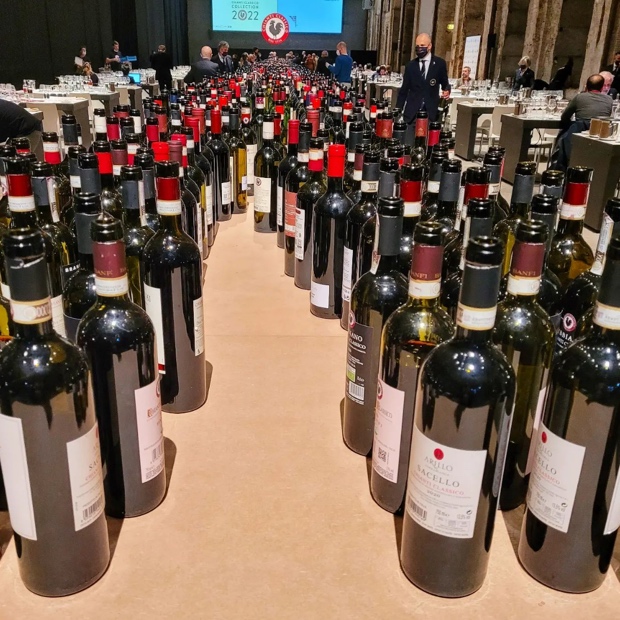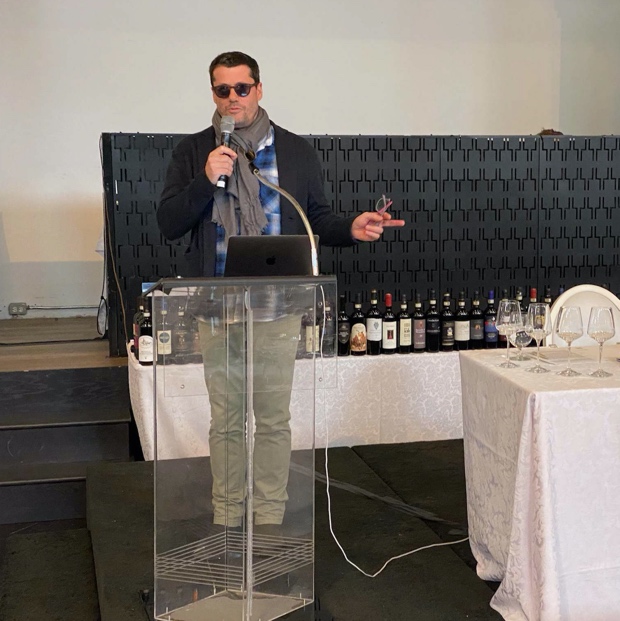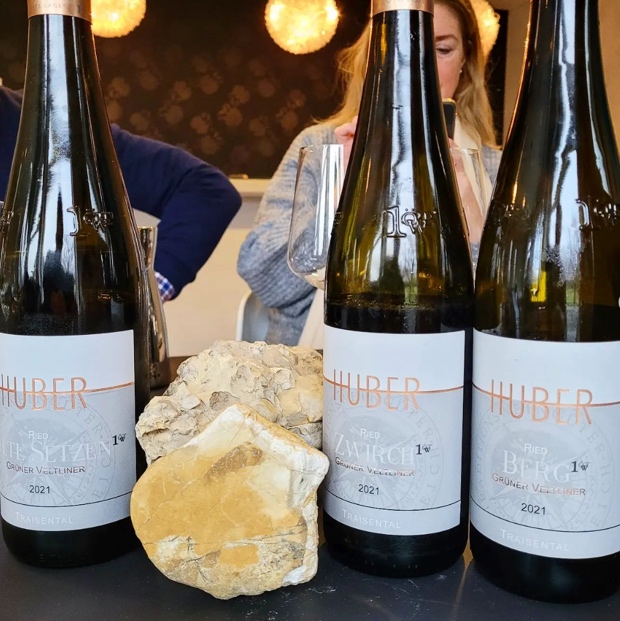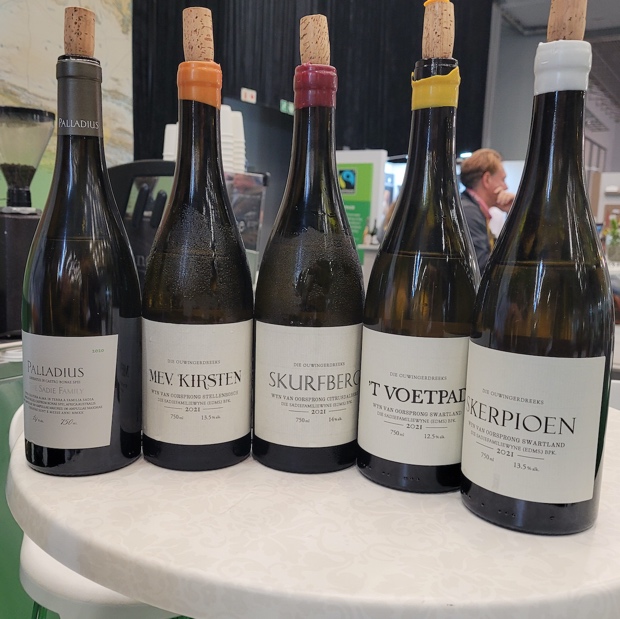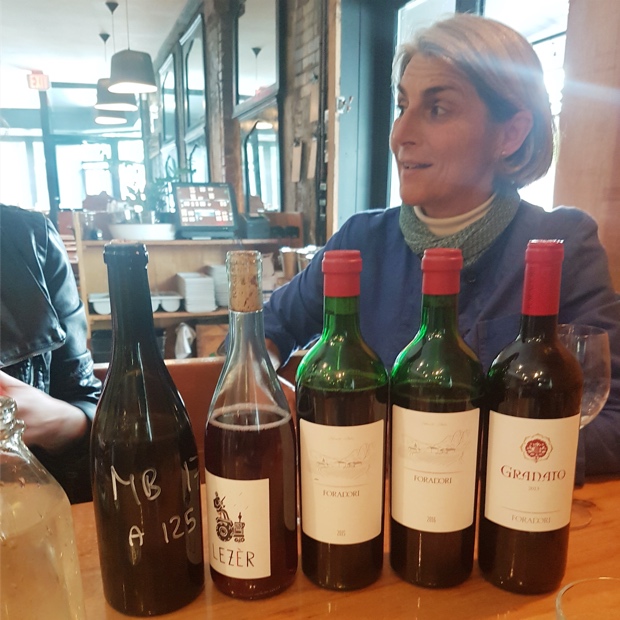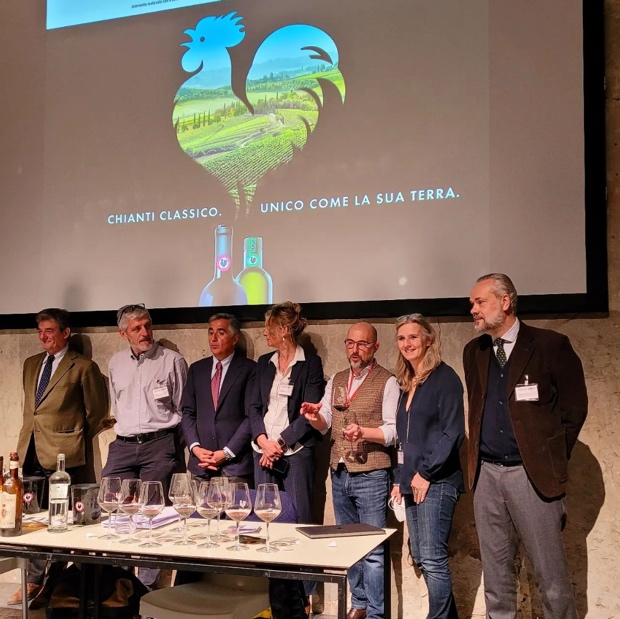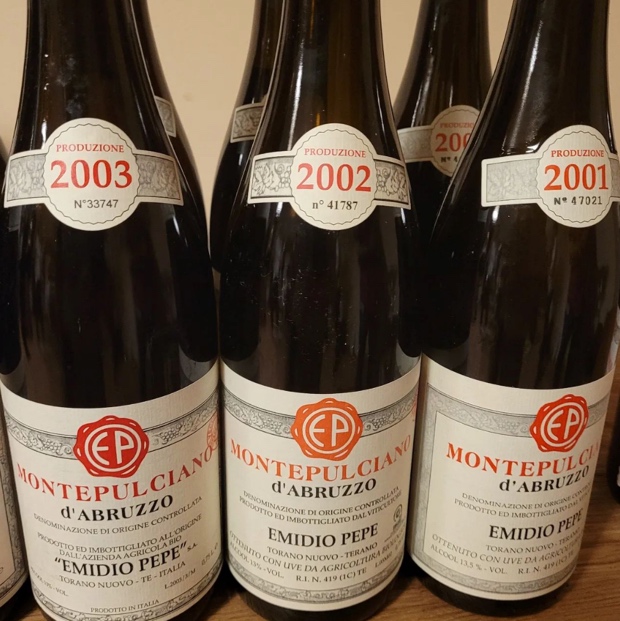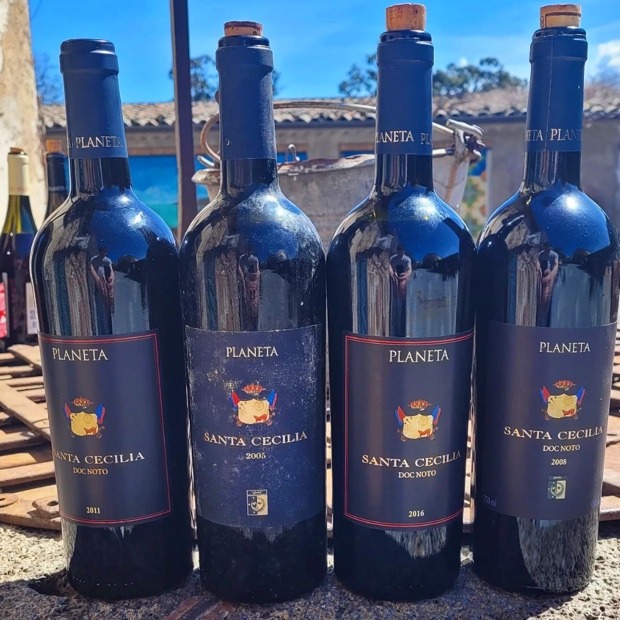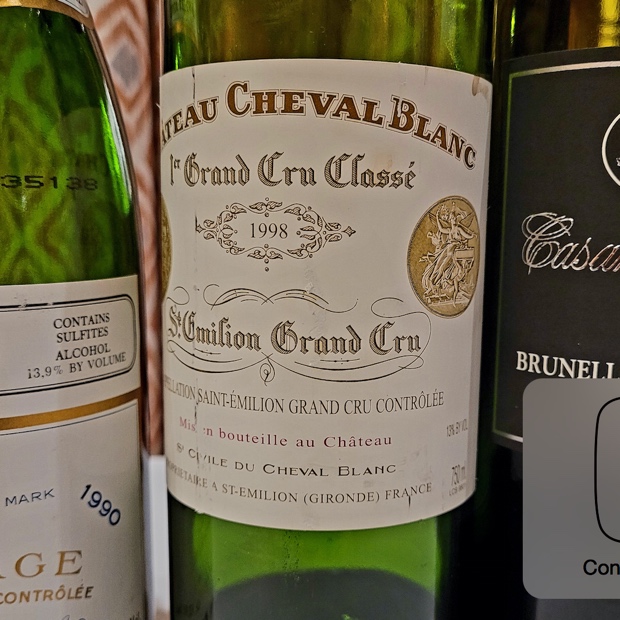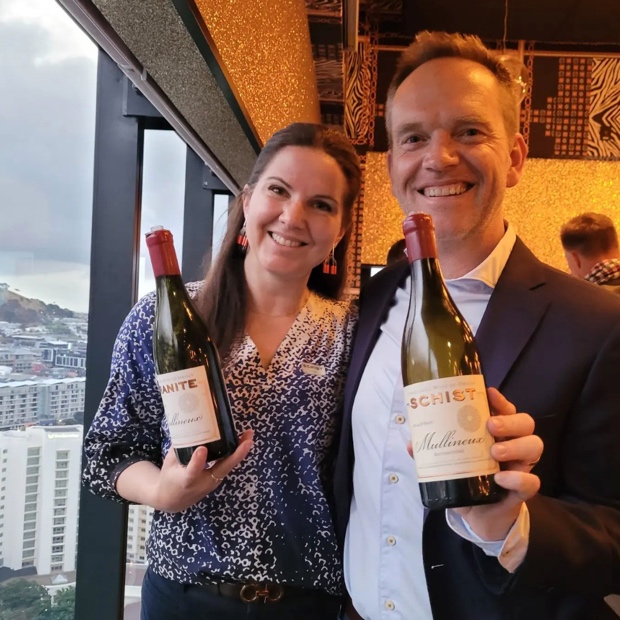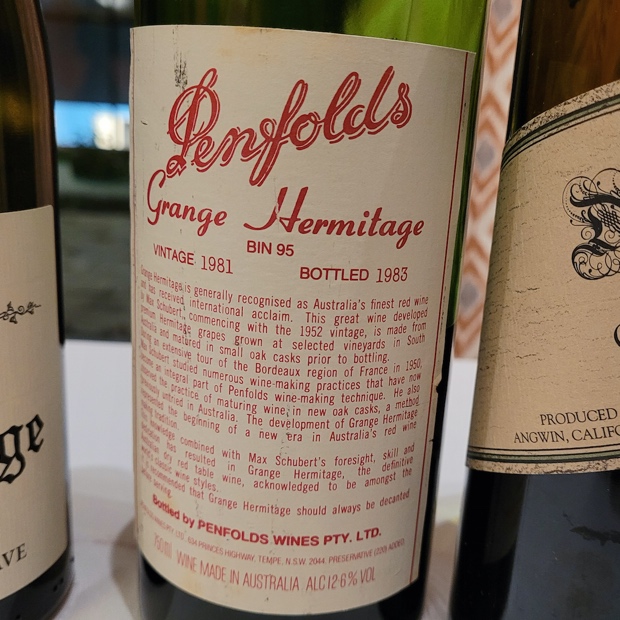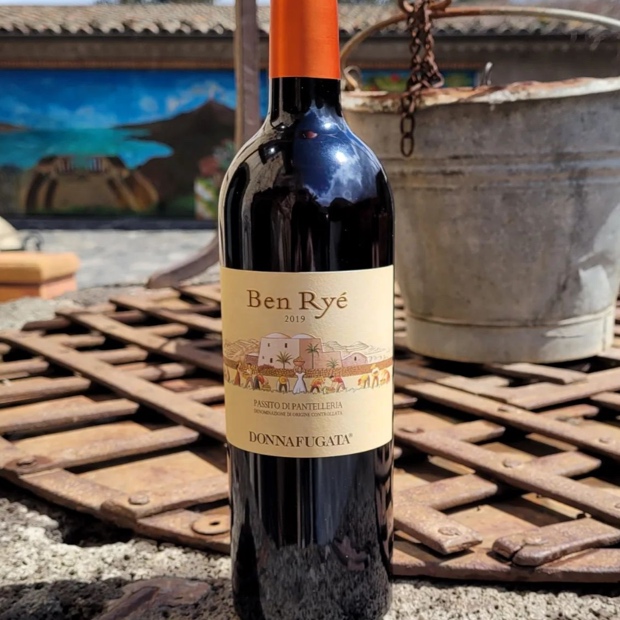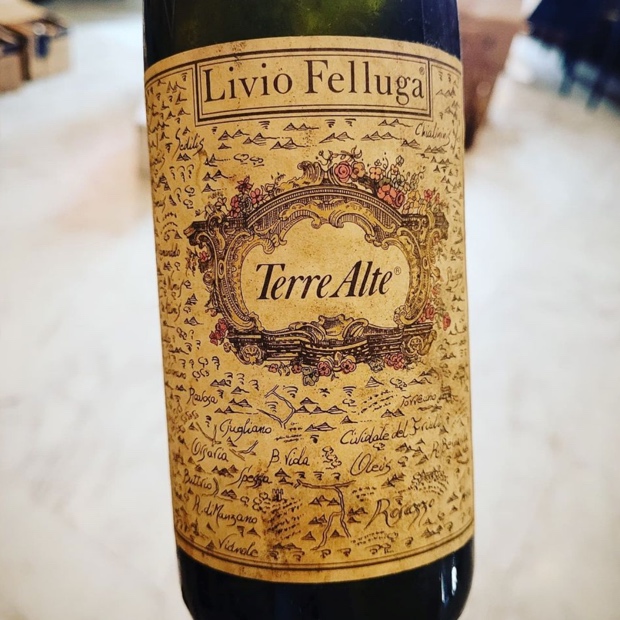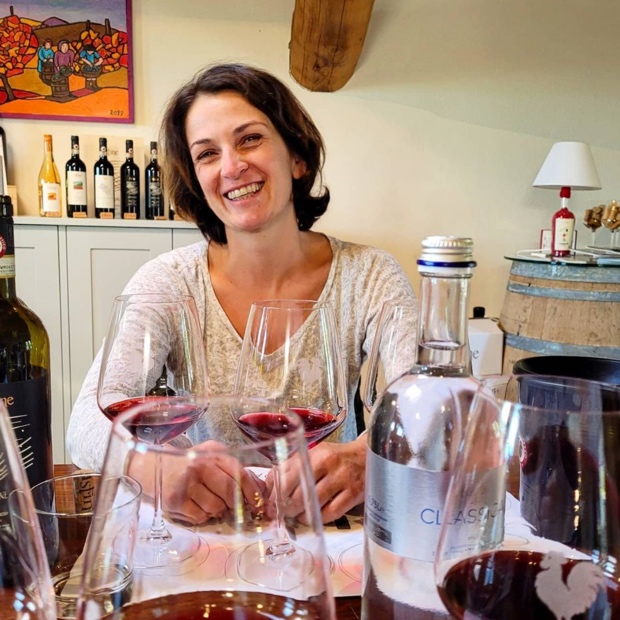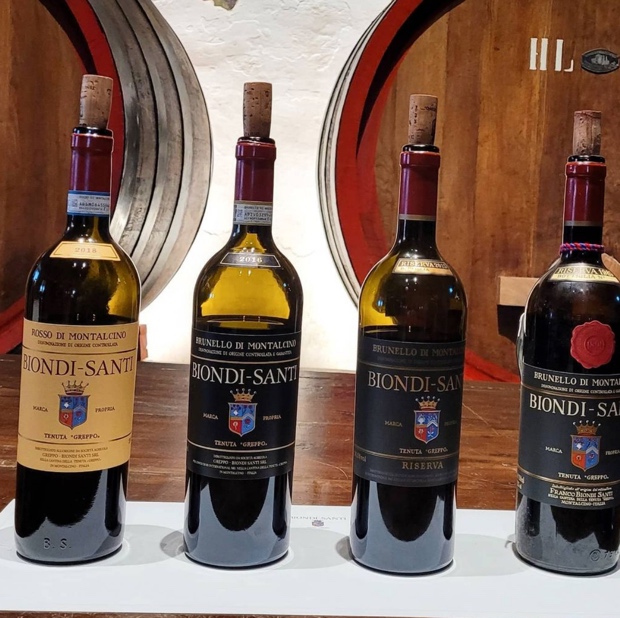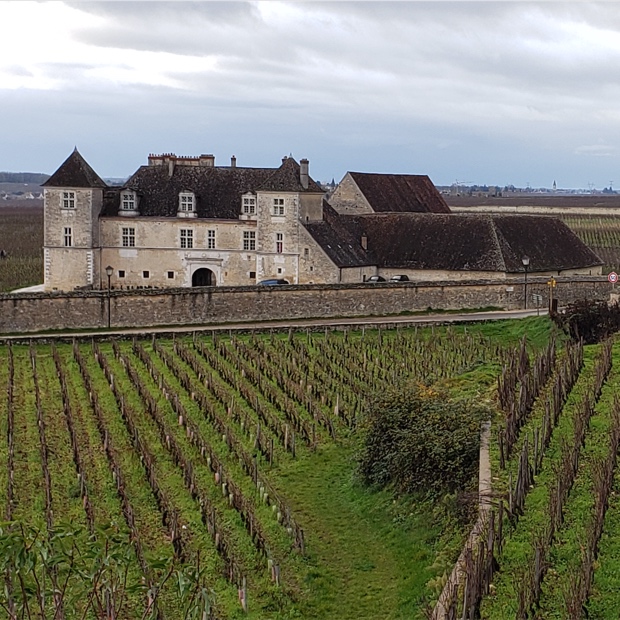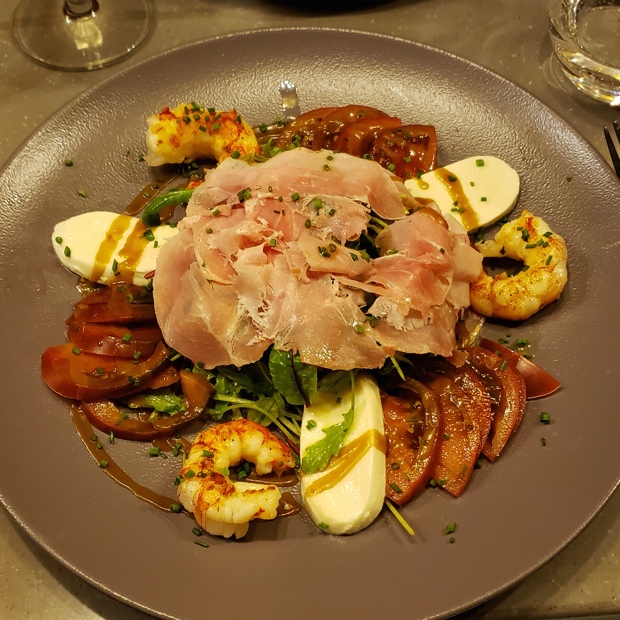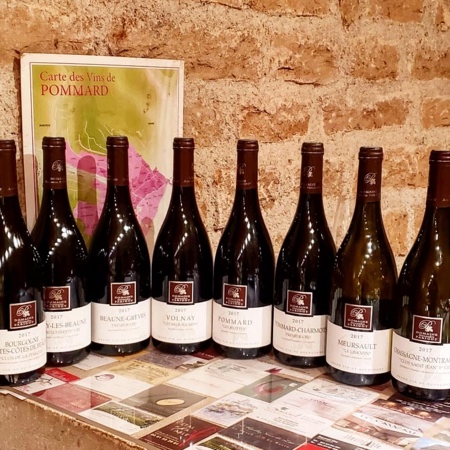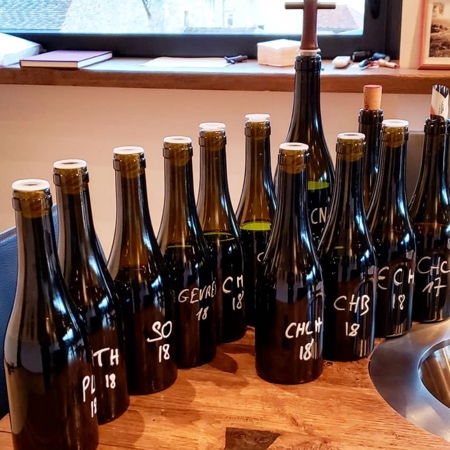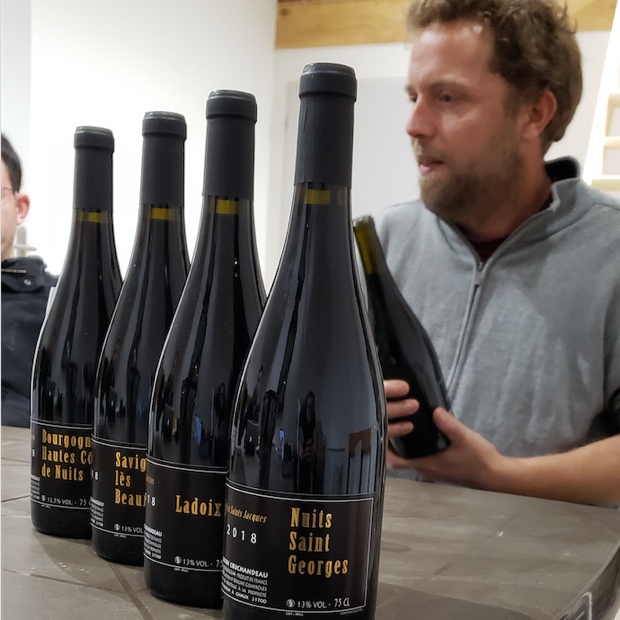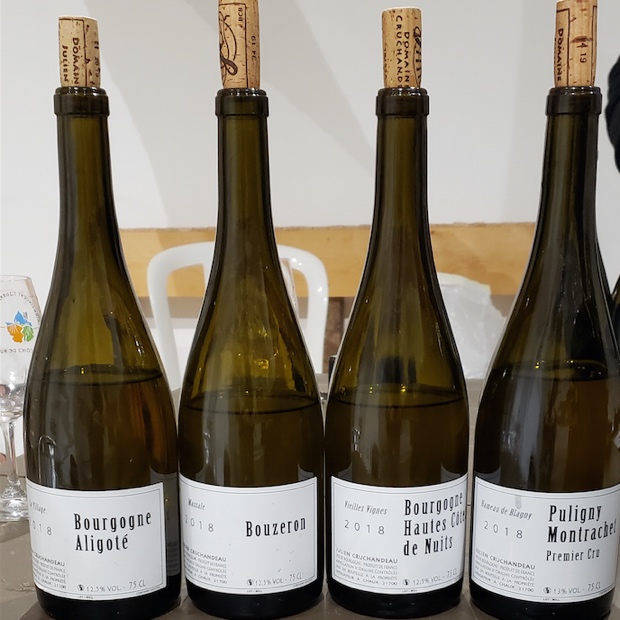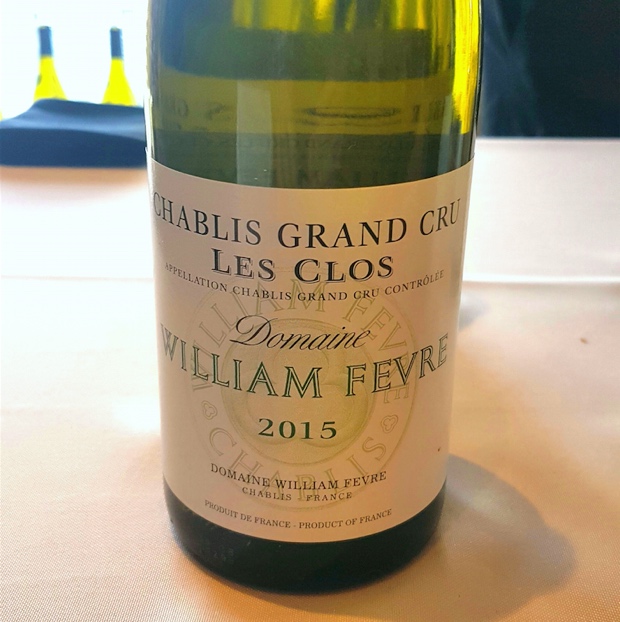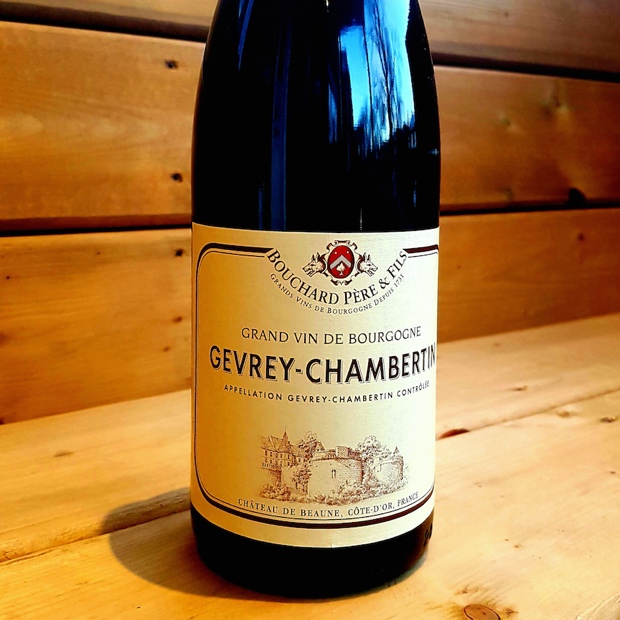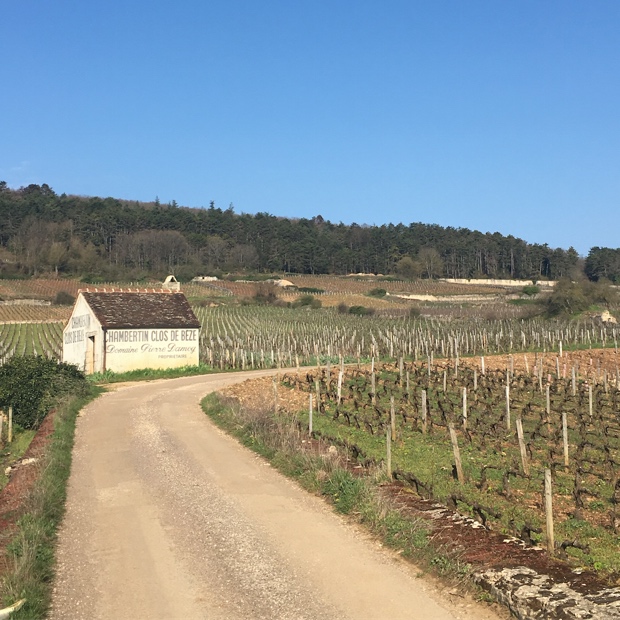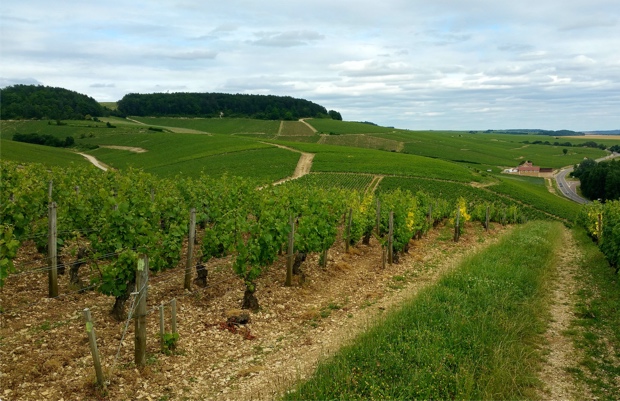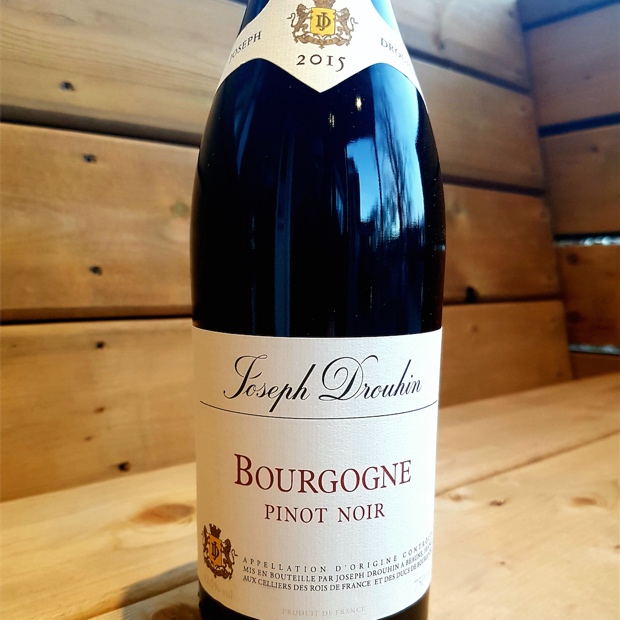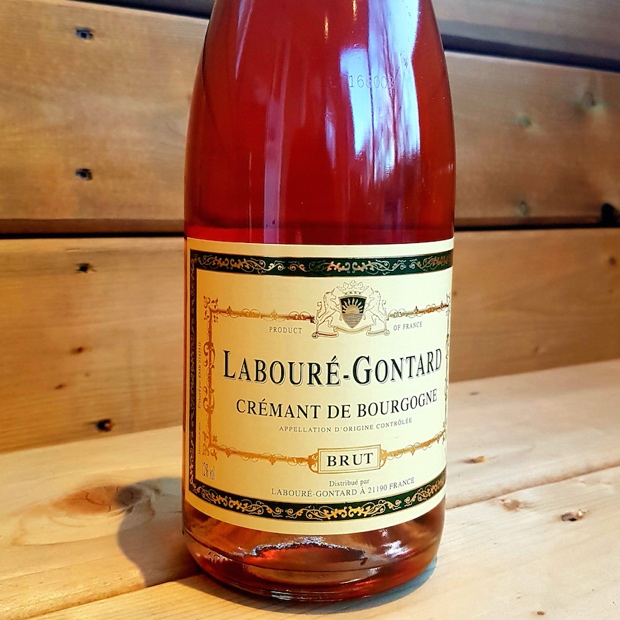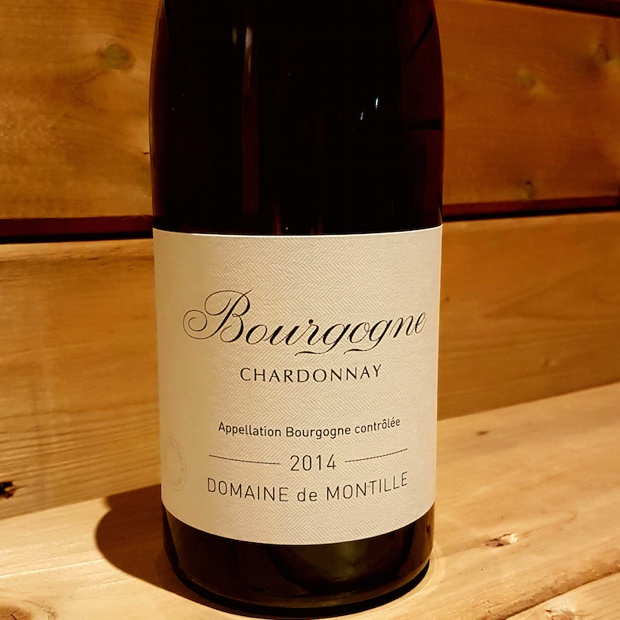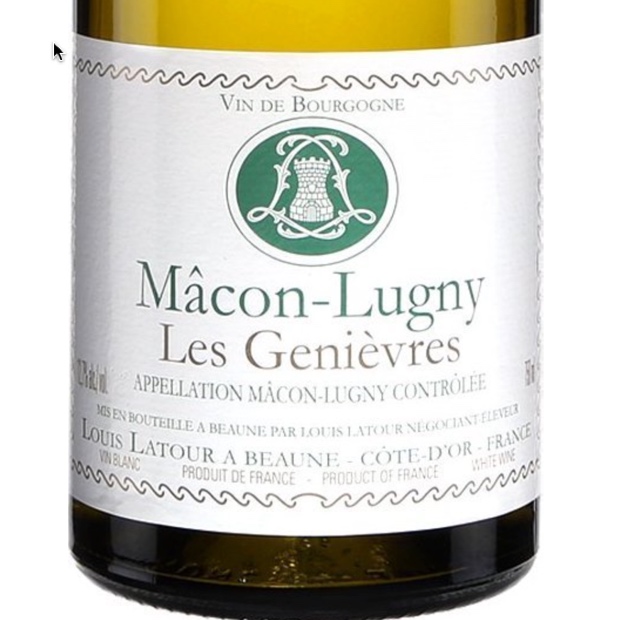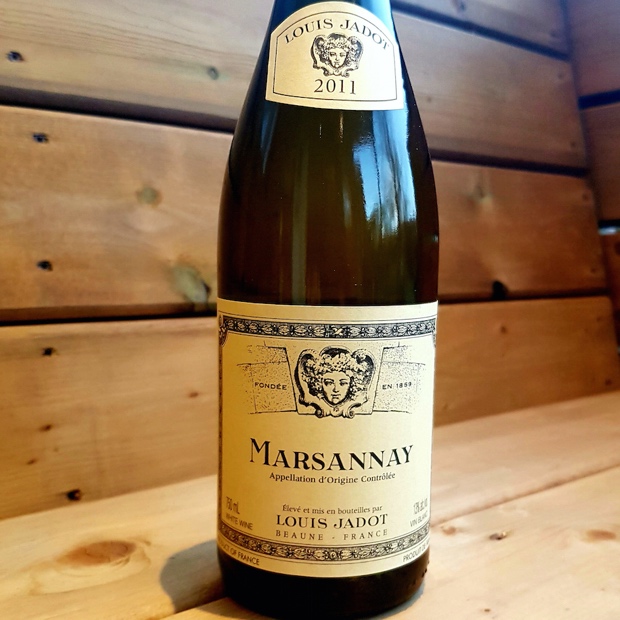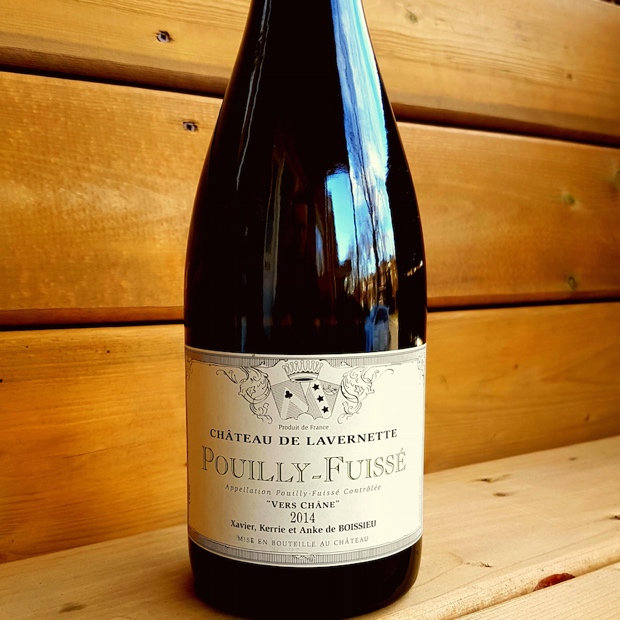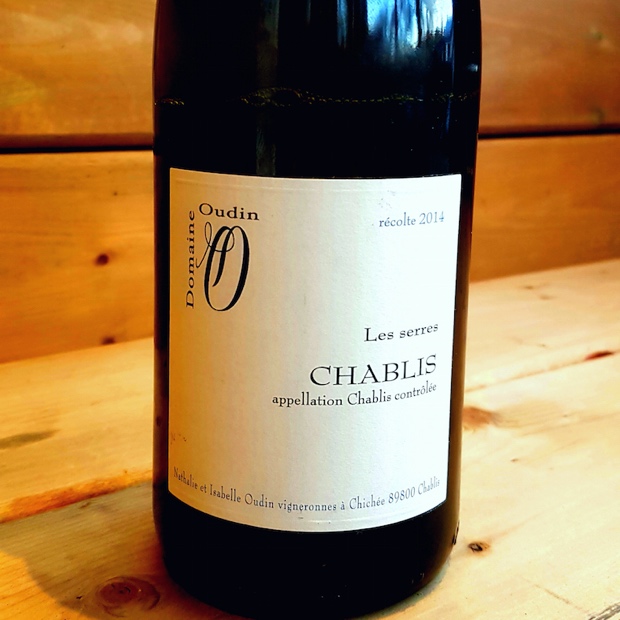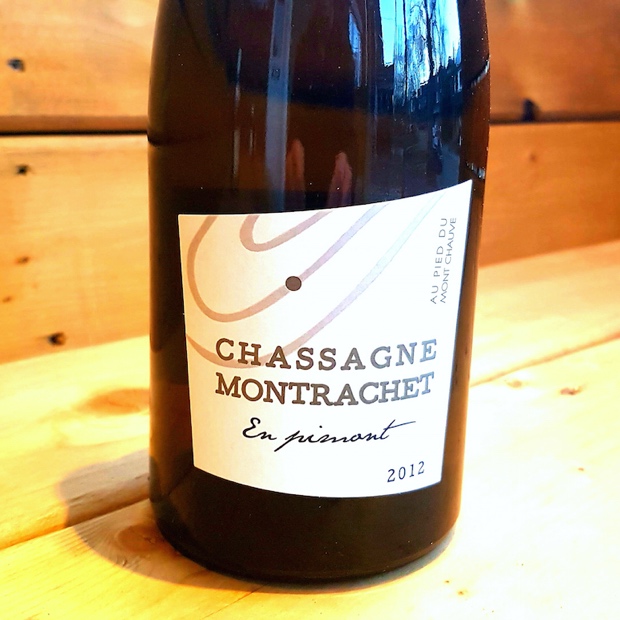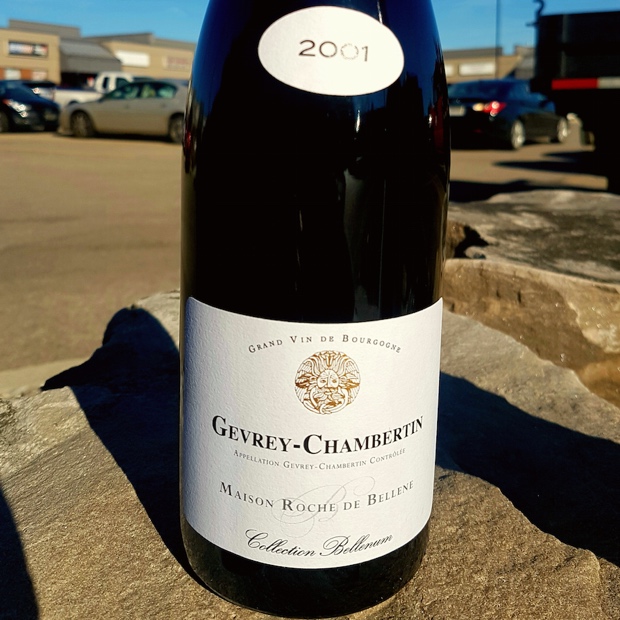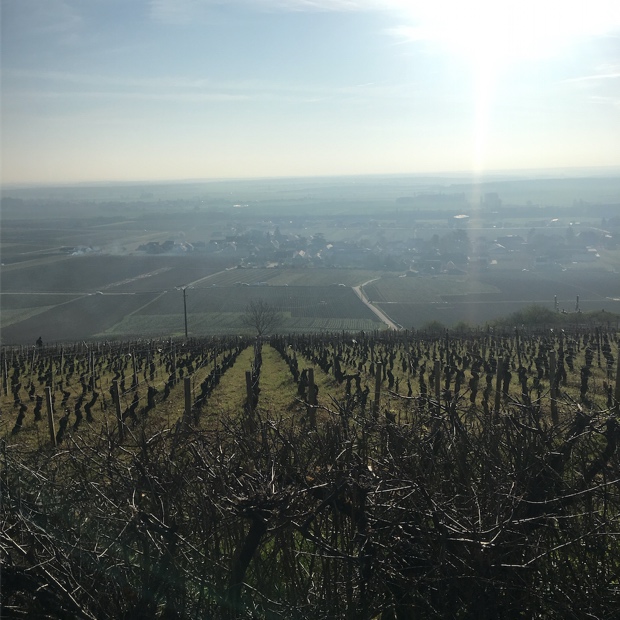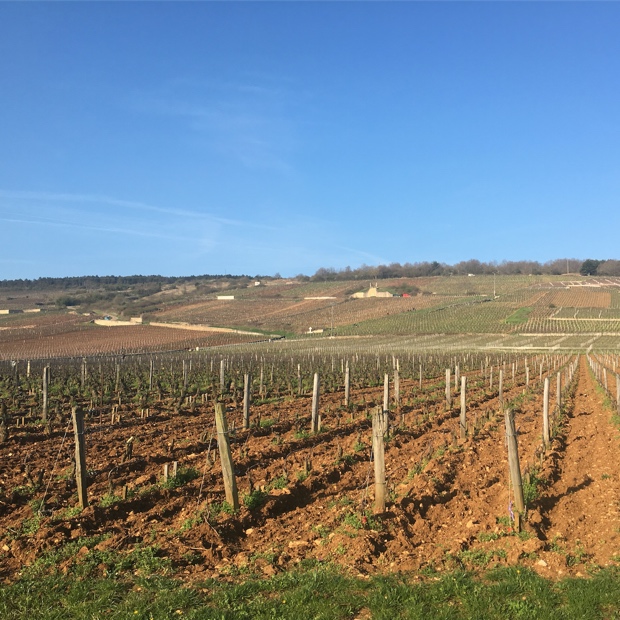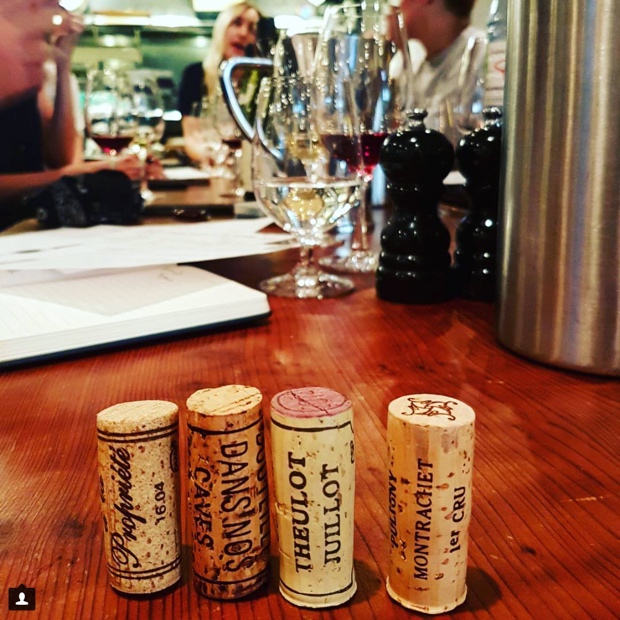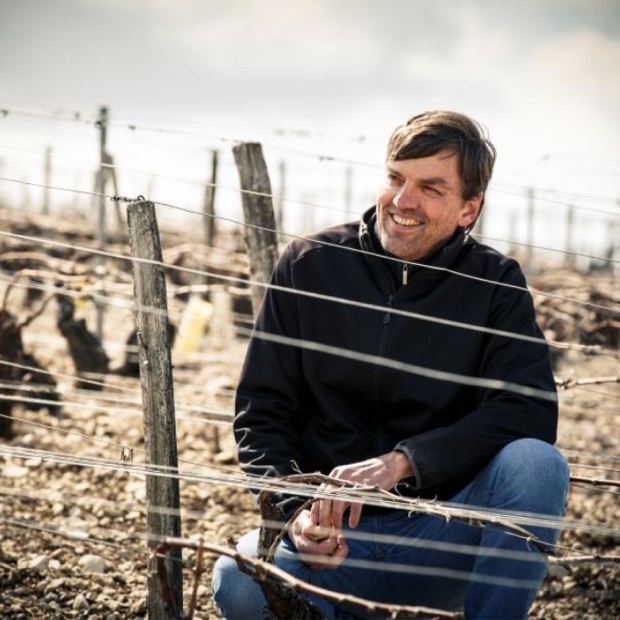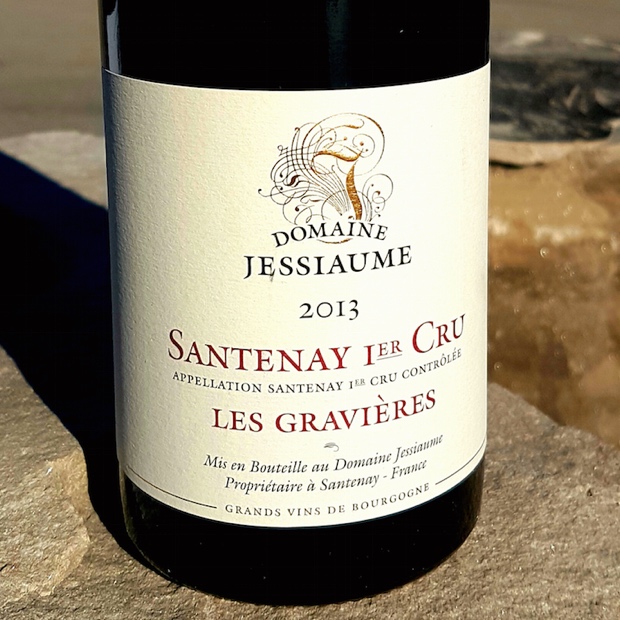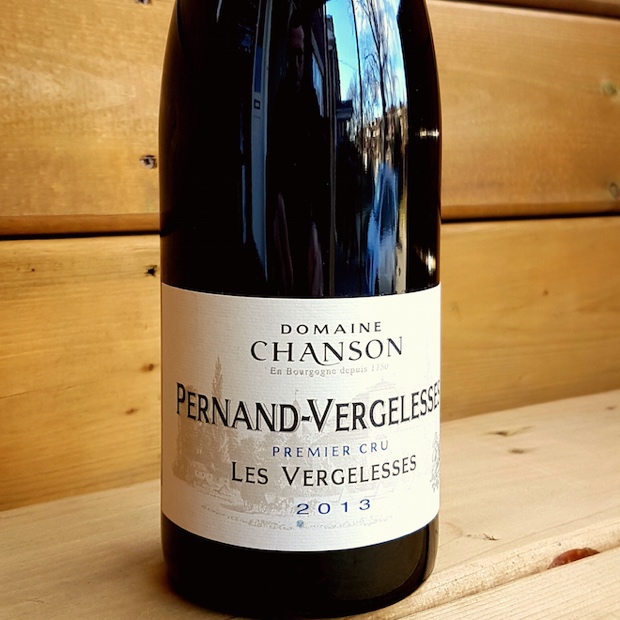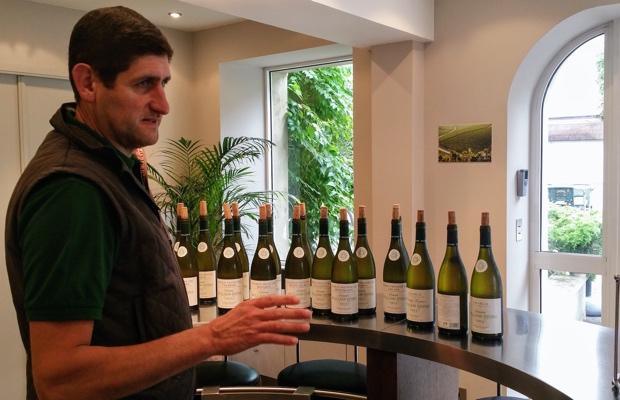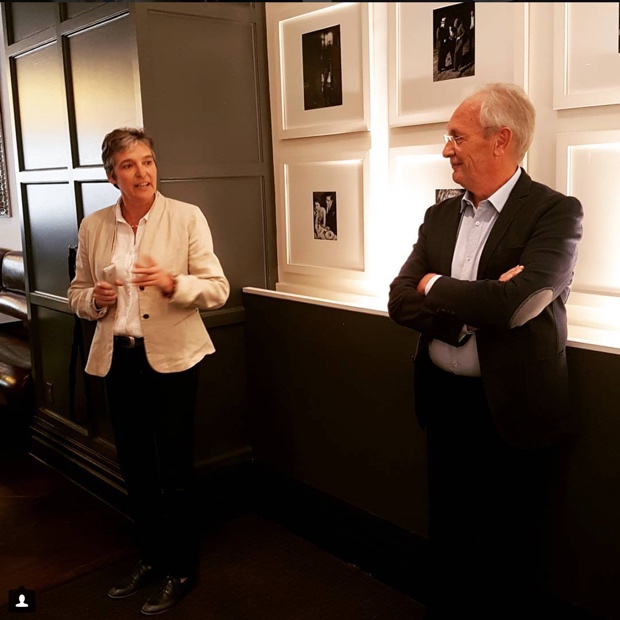
Every stop is neatly planned for a poet and a one man band, but #i4c Sunday @ravinevineyard is always #homewardbound
It’s #i4c, the coolest of chardonnay celebrations. It’s a pilgrimage to a local mecca attracting thousands, arriving to praise chardonnay in all its glory. It’s chanted with incantatory connotation by patrons cantilevered like alluvial fans across the Niagara Peninsula. It teaches us about more than chardonnay because the rapidity of climate change is real and the desire for fresh is yet unquenched. This transcends chardonnay. It’s about growing grapes and making wines in places we all previously discounted. Recently scoffed at. It concerns farming higher, further and edgier. This conference and this grape together let us know that we must change.
Few ideals or notions are hotter these days than those relating to cool climate viticulture and the selvage regions from where such wines are produced. That is why each summer for the past seven Niagara has attracted a world-class global presence for its most important annual congress. The seventh installation of the International Cool Chardonnay Celebration made an ironic and apropos choice in California’s Karen MacNeil to act as keynote speaker at The School of Cool. Ironic for obvious reasons because MacNeil spends most of her time talking about and educating on matters pertaining to growing areas generously gifting maximum sunshine to its grapes. Apropos because like any top quality orator she chose to speak about a rapidly changing world and a paradigm shift for wine growing, producing and ultimately consuming being led down an extreme, on the fringe and ultra cool path.

@KMacwine on @coolchardonnay Refrigerated sunlight, conscious marginality, sophisticated choreography. #i4c17
Cool, as in temperature and slowly developed phenolic ripeness. Cool, as in places like Champagne, Nova Scotia, Austria, Uruguay, northern Chile and Ontario. But MacNeil was quick to point out that the greatest terroirs may yet to be known, despite the proverbial Canadian wine cognoscenti already in the possession of harnessed and usable power through information, knowledge that tells us that five of the 15 (also known as one-third) coldest wine regions growing quality grapes, are found in Canada. “Elegance is directly connected to coolness, the slow dance, refrigerated sunlight,” waxes the poetic and rhapsodic MacNeil, “from couch potato chardonnay to lift, spirit and class.” She admits to pitting the world versus “us,” as a challenge against “them,” the overwrought, overblown and over-produced. She asks the question, “why are they not over it already, these cream puff of chardonnays?” and then “oak is like a tattoo, it doesn’t always look good with age.”
If all these warmed by the hot, hotter and hottest sun and fashioned to express this in hyperbole wines all taste so similar, is this really something reassuring and knowable? Apparently it still is, this persistent overloaded ice cream sundae style of chardonnay that will just not go away. But wake up and smell the altitude and the stone-based, craggy outlooks of “marginal” vineyard locations. “All of the world’s greatest grapes are only great if they exist on the edge,” said the great Willamette Valley Oregonian David Lett. “Complexity is only achieved, paramount to success, by a slow dance or heartbeat. A great wine revels itself sequentially, over time,” insists KMac, as opposed to mindless and soulless. With acidity at the crux of cool climate wines she talks of “conscious marginality” and “sophisticated choreography.” This is how we should see the future, not only in chardonnay, but in all wines subjected and connected to global climate change.

Says @johnszabo apparently winemakers matter too. #i4c17 @coolchardonnay I do it my way #schoolofcool
Related – A link to the School of Cool presentation download
In the first of three Friday School of Cool sessions at White Oaks Conference Resort and Spa it is MC Master Sommelier and WineAlign Partner/Critic John Szabo who introduces the “soil smackdown.” The question “is there a best soil type for chardonnay” is meant to instigate a healthy discourse but like every #i4c that came before it quickly turns to a dissing of the “m” word. Paul Anamosa of Vineyard Soil Technologies, the main man down in California, is the first to speak. He rambles on about trace minerals, nematicides, oils and clay minerals – kaolinite is the smallest and yet still a very big molecule. “I don’t know too many winemakers with deflated ego problems,” is interjected. “Minerality is a metaphor, not a simile (like what it shown on the aroma wheel). It does not get up and impart flavour into the wine. It’s a romantic notion. Limestone doesn’t give up its water readily or easily.” Here we go again.
Anamosa will give up the idea that poor soil structure allows for a low and slow hydration transfer, with no spikes up or down and this uptake certainly affects vine growth, nutrient transfer and ultimately flavour, but its the elements found in the water that effect these impressions. Not “minerality.” Must be hard to go through life with such a scientifically nihilist approach. It sounds exhausting.

I don’t know too many winemakers with deflated ego problems. Paul Anamosa @coolchardonnay #soilsmackdown #i4c17
Three winemakers go pro on the mineral ideal. Paul Berger of Berger-Rive has been making his wine since he was four-years old and unsulphured Rosé no less. He talks of clay over limestone, places where “the ground is in love.” Thomas Bachelder monkifies the soil plant matrix made to transmit minerality. “It’s as much about photosynthesis in the new world but minerality is still apart of it. Jory soils in Oregon bring a salty tang, a savour. It’s true.” Shiraz Mottiar notes that calcareous soils that start wet and sticky eventually turn to concrete. “They don’t crumble, there is no soil tilt, they are angular, evolving and difficult, self-compacting and that hard-pan deals with high mineral content. So we use cover crops for developing soil tilt and friable structure.” There points for the mineral team. Szabo concludes with “anyone getting the sense that this is pure crap? We’re going to continue with the program anyway. Monkeys in a parallel universe are doing this and doing it better.”
In the second session, “Chardonnay, I do it my way,” Szabo told several hundred #i4c junkies “apparently winemakers matter too.” I thought Invivo Wines’ Mark Boardman said it best. “Rob (winemaker “Crusher” Cameron) is not trying to make a $100 Burgundy here folks,” but rather chardonnay can be so happy in so many places, in so many ways. Here it’s from one of the warmest parts of New Zealand, with high rainfall, on Pacific coast of the South Island. It’s about pleasing the customers, being approachable and “nice” on the palate. “Respect, not patronize the consumer.”
François Morissette, vigneron of Pearl Morissette talked technique. “Whatever we press, we oxidize. We do not oxidize wine, we oxidize must.” There’s a big difference. The stabilization of these wines are attributed to this idea of getting rid of all oxidizable compounds before they enter into the next stages of the winemaking process. Pleasing aromas, flavours, textures and ultimately the sum of the above elevates the cool chardonnay game and speaks to the future. Ravine Vineyard’s Marty Werner remarked on the high degree of heat units but also the cool nights in 2014 so his chardonnay received no cooling, some sulphur for a night, straight to barrel and left a bit empty. Why? “Because it’s different in Niagara, you need to get some oxygen in there, so that we develop some more fruit characteristic.”

Dr. Jamie Goode
Heidi Noble, Owner & Winemaker of B.C.’s Joie Farm coined the term “juiceidity.” She told the crowd, “when (cellarmaster) Karl speaks it’s incredibly important and poignant,” he knows the truth about location, from the most northerly tip of the Sonoran desert but in a zone of what Karen MacNeil called “conscious marginality,” a micro climate of cool within a hot zone.
And finally, le grand ami himself Norman Hardie. “Solids matter to me,” he explains. “We pump out the separated clear juice until the point where I feel like we are getting to the danger zone.” They make use of horizontal tanks, “so the ratio of solids to juice is much higher.” Solids are critical to expressing terroir but too many solids and it’s too reductive. “I’ve gotten braver and braver as time’s gone on.” Mackenzie Brisbois talked about the 2015 vintage, her first full one at Trail Estate. Her methods include hyper-oxidized, cold-settled, natural ferments in stainless steel, put to barrel towards the end, 4o per cent new, 60 neutral, full malo, 10 more months, sulphured, racked out of barrel and a coarse filtration so it’s called unfiltered. “Hopefully my lack of filtration helps you to hear the music in my wine.”
The third School of Cool session looked at dosage in bubbles. “The Sugar Trials,” or as moderator John Szabo M.S. told us “sparkling wines are wines of process and one of the most important events happens right at the end of the trail and that’s called dosage.” Essentially, the crux of what it is, the sugar trials define how much, if any, should be added.

A Sunday #i4c @coolchardonnay morning at the P & P and Josh Ritter covering Modest Mouse. Johnny Cash next.
Dr. Belinda Kemp led the panel discussion and her research at Brock University’s CCOVI lies at the heart of the Ontario wine industry’s investigations. Tawse winemaker Paul Pender had this to say. “Balance is something I strive for but rarely achieve.” He noted that it’s about pleasure, hedonism sometimes, ultimately something that makes you smile, and tastes good. It’s always a moving target, so many things effect how it tastes and more so your perception of sugar and acidity, even what you had for breakfast this morning. “Sugar kind of takes away terroir.” Dr. Jamie Goode added, “it turns out we all live in different taste worlds. Because we model touch, taste, smell and all the sensory perceptions into an unconscionable, alt-reality which bears no real resemblance to how a wine actually tastes. It’s highly personal.”
The i4c weekend takes winemakers, journalists and consumers from White Oaks’ School of Cool and over to Niagara Airport’s hangar for a grand, cool affair. It shuttles past lunch tastings scattered across and throughout the Niagara Peninsula and Escarpment locations and lands at Ridley College for the worlds most grand chardonnay event. It culminates on Sunday at Ravine and Redstone wineries for brunch and if you’ve not had your fill, more chardonnay. Most of all it brings people together but not without an army of volunteers to make it happen. It functions seamlessly because of people like the Cellar Sisters, Angie Jewell and MJ Macdonald, Paul Dearborn and Kari-and Macknight Dearborn. The Cool Chardonnay weekend delivers year after year with thanks to VQA Wines of Ontario, Dorian Anderson and Trisha Molokach and the chefs of Niagara. The media are treated (better than we deserve) because of Wine Country Ontario’s Magdalena Kaiser, Joanna Muratori and Ryan Zanette.
I was not able to taste and review every chardonnay on hand at #i4c17 but I did get to a better percentage than I actually thought I had at the time. Many of these wines are available in small quantities through the VINTAGES Online platform through August 3rd so you have exactly three more days to act. Here are 69 reviews. If you are thinking about injecting some cool chardonnay into the rest of your summer plans then read on and make your picks. I hope I’ve been of some assistance.

Are you ready for an #i4c17 @coolchardonnay Saturday night?
Invivo Chardonnay 2016, Gisborne, North Island, New Zealand (499855, Agent, $16.95, WineAlign)
A nicely green and cool Gisborne composed chardonnay is just the ticket for warm nights, frâche-inflected appetizers and a good chill. This is quite fleshy, creamy and tangy, just stopping short of citrus-sour piercing and intense. It’s that creamy sherbet and tangy gelato character that balances it out. Drink 2017-2019. Tasted June and July 2017 invivowines nicholaspearcewines @InvivoWines Nicholas Pearce
Maycas del Limarí Reserva Especial Chardonnay 2015, Limarí Valley, Chile (143768, $18.95, WineAlign)
Lovely vintage and cool-climate conditioning with A-plus exemplary effort from the Limarí specialist. The ripe and bright fruit is buoyed by classically rendered acidity that never relents. I really like the elegance and the way the wood is just a spice accent, not a cream churning machine. Not to be missed. Drink 2017-2020. Tasted May and July 2017 maycasdellimari #thevineagency wines_of_chile_canada @maycasdellimari The Vine – Robert Groh Agency @WinesOfChile

Cheesecake Bar by Chef Frand Dodd, Trius Winery and Restaurant
Trius Barrel Fermented Chardonnay 2015, Niagara Peninsula, Ontario (346064, Winery, $19.95, WineAlign)
Quite flinty and mineral smoky, even for Trius and Niagara chardonnay so it would seem that winemaker Craig McDonald prepared this larger batch with a friendly reductive environment. The aim, goal and result adds up to locked in freshness and a decoding of oak to relegate the label as secondary to the post-modern future of this bottling. It’s crisp, crunchy, spoken of and for place with edging cut with spice. The creamy centre is present and delivers texture, not weight. Really fine effort. Drink 2017-2019. Tasted July 2017 triuswines @triuswines

Esterházy Chardonnay Leithaberg DAC 2015, Burgenland, Austria (511386, Agent, $19.95, WineAlign)
Tangibly full and rich style of chardonnay with a flinty, smoky limestone foundation edge, a pierce running through the barrel spiced mid-palate and quite generous length. Really fleshy, lemon-citrus sparked, clean, precise and stony good. Of markedly fine compression, layers woven of tart and stone. A highly composed and forged composition, in action and temperament, so kudos to the great work out of a warm vintage. It’s a complete wine all the way through, perhaps restrained at first but structure is the key to its success. An Austro-pure, appellative finessed chardonnay if ever there was from a place where the grape thrives unencumbered and blessedly expressive. Drink 2017-2020. Tasted twice, with Stefan Tscheppe, July 2017 #esterhazy @esterhazywein austrianwine Esterhazy Wein @NaturalVines @oesterreichwein @AustrianWine @BirgittaSamavar Marzia Gallo @austrianwine
Pierre Sparr Le Clos Sainte Odile Brut Crémant D’alsace, Traditional Method, Ac, Alsace, France (457788, Agent, $19.95, WineAlign)
Sparr’s site specific Crémant would seem counterintuitive to the free and easy-going genre which prides itself on the purpose of wide-ranging food matching but the divergence here in minimal. Le Clos Sainte Odile is equally proportioned though it carries a marked increase in lees and texture. Smells more like Champagne and acts this way too, so in that sense the quality improves and food will benefit several fold. The length is exceptional. Still creamy Crémant but with more layers and fine complex stills. Drink 2017-2020. Tasted June and July 2017 #pierresparr profilewinegroup vinsalsace drinkalsace #PierreSparr @ProfileWineGrp @AlsaceWines @VinsAlsace Pierre Sparr Bernard Sparr Maison Pierre Sparr Successeurs Profile Wine Group @AlsaceWinesOfficial @vinsalsace
Pierre Sparr Crémant D’alsace Chardonnay Brut Méthode Traditionnelle, Ac Alsace, France (416040, Agent, $20.00, WineAlign)
In Sparr’s eponymous Crémant bottling the dosage is evident in every facet of fizz being to balance out the sour acidity and formidable tension. The most Champagne like of the flight is contextual, textural, elevated and serious. It is a bit on the sweet side (at 8 g/L of RS) as compared to (3.7 TA and pH of 3.29) with 18 months minimum on the lees and aging in oak casks. There is no shortage of fruit and that acidity is surprisingly lively. Tasted with Bernard Sparr who says quite simply, it’s “easy to drink.” Drink 2017-2019. Tasted July 2017 #pierresparr profilewinegroup vinsalsace drinkalsace #PierreSparr @ProfileWineGrp @AlsaceWines @VinsAlsace Pierre Sparr Bernard Sparr Maison Pierre Sparr Successeurs Profile Wine Group @AlsaceWinesOfficial @vinsalsace

Marcel Cabelier Crémant De Jura Organic 2014, Jura, France (738641, Agent, $19.95, WineAlign)
A most engrossing and provocative Crémant, at first aromatically onion skin sweaty and sweetly caramelized. No citrus to really speak of and then lemon sweetness to taste. Sapid to be sure, leaner, crisp, on the path to a searing style. Fascinating when you consider the dosage number is upwards to 12.3 RS while the actual acidity is 5.26 TA. An elevated 3.37 pH and a ripeness from the warm vintage really helps to hide its sugar, incredibly so. Texture never hurts as well as this spent 24 months on the lees. Will age nicely into secondary waxy territory. Drink 2017-2022. Tasted with winemaker Nicolas Haeffelin at i4c, July 2017 #marcelcabelier #andrewpellerimportagency #jurawine #marcelcabelier @APImportAgency @JuraWine #marcelcabelier @APImportAgency @JuraWine

Cremaschi Furlotti Chardonnay Single Vineyard 2015, Do Loncomillo, Maule Valley, Chile (511097, Agent, $22.00, WineAlign)
DO Loncomilla lies at the heart of the Maule Valley, a place of serious Chilean history. The Battle of Loncomilla was the decisive campaign of the 1851 Chilean Revolution between conservative government and liberal rebel forces. It’s also apparently a terrific place to grow chardonnay. Winemaker Gonzalo Perez’ 2015 is a fuller expression, with green apple piquancy to nose, a wealth of fruit, tart done so right and a true barrel-blessed chardonnay bite. It reeks of stone, acts restrained enough to seem (at times) unsure but in its quietude there is a mineral sway to say this must be the way. It solicits a follow me down the stone road, up to a very orchard palate with gregarious flavours and compressed acidity. Serious, almost brooding chardonnay but very new world. Chewy and very long. The soils are volcanic and alluvial, aiding and assisting to gather into this highly complex, 100 per cent malolactic, reductive, tart and biting chardonnay. The most surprising and intriguing find at #14c17. Drink 2017-2020. Tasted July 2017 cremaschi_furlotti @cremaschifurlotti

Coteau Rougemont Chardonnay La Côte 2015, Quebec, Canada (Winery, $24.00, WineAlign)
From La Famille Robert and the latest, newest, impressionable cool climate frontier in Rougemont Quebec, climate change delivers another stellar chardonnay attack, here with something quite supple, almost creamy, acid-driven but surprisingly far from scathing and eminently drinkable. These vines are planted on sun-drawing south facing slopes with more than ample pebble and schist in the soil, enough no less to streak a wire of balance through the softened, downy fruit. Well done. Drink 2017-2019. Tasted July 2017 coteaurougemont #CoteauRougement @VinsduQuebec Vignoble Coteau Rougemont
Creekside Chardonnay Queenston Road Vineyard 2015, Niagara Peninsula, Ontario (Winery, $24.95, WineAlign)
Comes barreling out replete with the highest of chard tones mixed with plenty of richness lifting and layering oak. Quite ambitious, full malo felt, of waves more than dollops of vanilla. The acidity comes later because nothing can get in the way of the creamy texture and voluptuousness. Cool but secondary to these flavours and mouthfeel are incendiary savoury tendencies. Adding things up all being equal the Queenston Road, St. David’s Bench vineyard, with its clay-loam and the eventuality of full-malo effect well, it’s really a thing of richesse. “I wouldn’t say this wine is a whole lot about minerality,” says winemaker Yvonne Irvine, “but it’s there in the bite on the finish.” Fair enough. Drink 2017-2021. Tasted July 2017 creeksidewine @CreeksideWine
Inniskillin Montague Vineyard Chardonnay 2014, VQA Four Mile Creek, Niagara Peninsula, Ontario (586347, Agent, $24.95, WineAlign)
If you have had the opportunity to taste the Montague Vineyard chardonnay from Niagara’s Four-Mile Creek sub-appellation in at least four consecutive vintages you will know that its style is only exceeded by its consistency. Little has changed; the same warm, barrel-kissed style comforts generously pressed and extracted fruit. It’s not that I don’t deduce soft, downy and buttery fruit from Montague. I do, but this vineyard always offers a counter-point with some firmness and compression, as it does with pinot noir. This 2014 is smoky and faintly smouldering, even a touch flinty. Even if it is a bit baked, spiced or toasted it is also a more mineral vintage for chardonnay. On one hand it offers or gives up too much of itself (and too early), with creamy vanilla, ripe melon and sappy, stone-fruit. On the other it finds balance amongst the dense layering of bigger, harder and more productive moving parts. You are going to want to match this with some protein and a good reduction sauce. I’d look to pulled pork, zesty kohlrabi slaw and a tangy BBQ sauce, duck confit with a savoury-spiked demi-glacé or coq au vin, just to name a few. Drink 2017-2019. Tasted January 2017 inniskillinwines cbrandscareers Inniskillin Vineyards
Vasse Felix Filius Chardonnay 2016, Margaret River, Western Australia (416511, $24.95, WineAlign)
Same price and highly credible follow-up is what we can all hope to taste and make comment to the great winemakers of this world so kudos to Virginia Willcocks of Vasse Felix for doling out another eminently drinkable Filius. Still holds the Australian cool-climate chardonnay candle from the Margaret River though it’s a touch fleshier, riper and creamier in 2016. The combination of salt and stony-mineral adds up to grip and the tightness means some air is needed. A mess of grilled langoustines would also work. Drink 2018-2021. Tasted June and July 2017 vassefelixwines margaretriver @vassefelixwines @MargaretRiverWineRegion @margaretriverwines1

Château Des Charmes Paul Bosc Estate Chardonnay 2014, VQA St. David’s Bench, Ontario (511345, Winery, $24.95, WineAlign)
Here is fine example of a winery showing off their rockstar barrel program in a starman of a chardonnay. The dreaminess on the nose and the early 1970’s ambient and textured guitar unction on the palate just get you stoned. “Didn’t know what time it was and the lights were low…Some cat was layin’ down some rock ‘n’ roll, ‘lotta soul.” Tart, lots of wood, bite, so much structure. Is it too much? Not when it’s the kind of chardonnay and music that can stand the test of time. Drink 2018-2022. Tasted blind at NWAC17, June 2017 and at #14c, July 2017 chateaudescharmes Château des Charmes
Domaine Laroche Chablis Saint Martin 2015, Ac Burgundy, France (289124, $25.25, WineAlign)
The vintage is a ripe, accessible and easy to love one so this marks a 90 degree turn for the Saint Martin. This is Laroche’s most important cuvée, sold in 80 countries and collected from select plots across 60 hectares of vines. Structure will always direct this cuvée and so long as Gregory Viennois is winemaker you can be sure that a taut entry will be joined by some subtle oak richness (in 2015, eight per cent in large, 25 year-old, 55 hL foudres). It’s just an aromatic hint but look forward with eyes closed and inculcate the texture addendum. Acids are soft and caressing. Drink 2017-2021. Tasted July 2016 and 2017 laroche_wines selectwinemoments @SelectWinesCanada
Southbrook Chardonnay Triomphe 2015, VQA Niagara Peninsula, Ontario (172338, Agent, $24.95, WineAlign)
The fruit for Ann Sperling’s chardonnay Triomphe ’15 is sourced primarily from Saunders (Beamsville Bench) with auxiliary support out of Heather Laundry’s old vine Lincoln Lakeshore vineyard. There are older, non-clonal blocks with perhaps some Musqué mixed in so the aromatics fly, with no restraint applied by the wild ferment and (mostly 300L) neutral oak. This Triomphe is anything but reductive, a no stress chardonnay from such a far from sluggish, clean ferment. The simplicity and complicity explain how beauty is curated, from a vintage where reduction did not happen or beg to happen so why try to force it. The copacetic re-quiescence bears witness to classic Ann Sperling in such a vintage. Chardonnay of mellow smoulder, of old barrel spice and one to define a certain kind on a line of disparate and unique, cool climate, i4c selections. There are 800 cases made. Drink 2017-2020. Tasted January and July 2017 southbrookvineyards thelivingvine @SouthbrookWine The Living Vine inc.

Bachelder Chardonnay Niagara 2014, VQA Niagara Peninsula, Ontario (302083, Agent, $24.95, WineAlign)
Thomas Bachelder’s ’15 chardonnay is a story of what happens ’round here, a chardonnay counting the years of peninsula life. It’s so representative, a comfortable stroll through the echelons and stages of a man’s history, in and out of Niagara eponymy and how it relates to a monk’s personal journey. It also traces the stages of vineyard life and for the winemaker, of fruit “slipping through my hands.” Out of 2015 chardonnay can be forgotten, with weather nothing to remember and on the heels of two most excellent seasons. It could easily pass “into the fog where no one notices the contrast of white on white.” Here is the time, place and harvest for Thomas Bachelder to interject and explain, to send a grape into a recognizable future, as far as the crow flies. He uses the barrel to pique the fruit into life, to inject French cream with the very intent in demand of its intention. Flavours are therefore sapid, piquant and variegated. In the end, you can drink this in August and into complexity, everything after. Drink 2017-2020. Tasted July 2017 bachelder_wines liffordgram @BachelderWines @liffordwineandspirits
Joie Farm Unoaked Chardonnay 2016, VQA Okanagan Valley, British Columbia (511261, Agent, $25.00, WineAlign)
Terpenes up front, orchard fruit and high acidity in ways that mimic riesling but the broad apple juice swirl and bite on the palate is all chardonnay. Shows sugar tempered by acidity in what is ostensibly fresh and simple, unoaked Okanagan juice. This is made in the vineyard, picked three times, from straightforward winemaking, making use of lots of solids,”lots of liquid aromatics,” as Heidi Noble notes. Champagne yeasts are employed to celebrate place. Drink 2017-2018. Tasted July 2017 joie farm liffordgram #JoieFarm @joiefarm @liffordwineandspirits

Willamette dammit! @bachelder_wines @coolchardonnay #i4c17
Bachelder Chardonnay Willamette 2014, Oregon (273334, Agent, $25.00, WineAlign)
The richest Bachelder Oregon to date for reasons explained by the indubitable and unwavering Thomas is no doubt in leading part a result of one of the earliest vintages on record for Oregon Pinot Noir. His Willamette is a veritable intertwine of mineral, fruit and energy like there is no tomorrow. Also welcome to the lengthy one. The barrel is a caramel pillow, a downy wooden bench, a soft French cream dream. Drinkable is the understatement, pleasure the song. Willamette Dammit. Drink 2017-2020. Tasted July 2017 bachelder_wines liffordgram @BachelderWines @liffordwineandspirits
Westcott Vineyards Estate Chardonnay 2016, VQA Vinemount Ridge, Ontario (427484, Winery, $25.95, WineAlign)
This is one of the first near-premium chardonnays to hit the market from 2016 and so a decision needs to be quickly made if the style is more vintage or house in origin. There really isn’t any estate precedence for this superabundance of fruit on the “normale,” like Christmas coming early or Niagara peaches appearing in June. The ripeness goes beyond freestone fruit and into the tropical realms occupied by mango and pineapple. There is no denying the nectarous and appetizing nature so I’d like to think it’s really a seasonal somewhereness that drives the druthers. Drink this young and with some poached seafood. It will satisfy the pairing. Drink 2017-2019. Tasted July 2017 westcottvineyards @westcottwines
Domaine Berger Rive Manoir De Mercey Bourgogne Hautes Côtes De Beaune Clos Des Dames 2015, Ac Burgundy, France (Agent, $26.95, WineAlign)
A restrained, faux-sugary, hautes Bourgogne, spirited near but so far from a Reuilly-like nose. You think it’s thin but know it’s not while the fruit struggles to steal the spotlight from the rocks. Very cool chardonnay with crazy natural sweetness and sneaky length. The warm vintage plus the limestone calcareous soil grows on you for sure and so that length shows off the best of its world and the talents of winemaker Paul Berger. Drink 2017-2020. Tasted July 2017 @FWMCan #BergerRive fwmcan @FWMCan

Traversa Viña Salort Chardonnay Reserve 2016, Canelones, Uruguay (511550, Agent, $29.00, WineAlign)
Chardonnay from Canelones needs to discovered and Traversa’s Reserve is a fine high-end place top start. The name is derived from a species of cinnamon called “canelón, growing along the banks of the homonymous river. This new fringe frontier for chardonnay is found here 50 kms or so north of Uruguay’s capital Montevideo. A specific sort of freshness is locked in tight, reductive in a gassing up the truck sort of way, subduing fruit and inviting mineral meanderings. It’s on the palate where things get very interesting, upon which the spice, buttered toast and brûlee of pears lay. There is a few percentage points too much wood on this next South terroir-Americanific frontier chardonnay but the substantial mid-palate fruit can handle the accents. A fine example in many respects. Drink 2017-2018. Tasted July 2017 familiatraversa @TraversaUSA

Malivoire Chardonnay Mottiar 2014, VQA Beamsville Bench, Niagara Peninsula, Ontario (Winery, $29.95, WineAlign)
This is classic Mottiar chardonnay, lean, sharp, quivering and yet somehow so knowable and comfortable. As time goes by this generates the confidence to represent the Beamsville Bench as its prodigal son, the handsome one, of pulchritude and with the promise of great memories ahead. If it’s a bit reductive, taut and aerified chardonnay, so be it, but it’s also so very Niagara, essential, the essence of what happens on dolomitic limestone. The low (3.15) pH factor at go time caused a force picked at high acidity to maintain the lean style and a partial (not much) malo assists in effecting this high-level bench factor. Shiraz Mottiar’s eponymous chardonnay is the shit, for Beamsville and for what he does best. Drink 2018-2022. Tasted July 2017 malivoire shirazmottiar @MalivoireWine
Rodney Strong Sonoma Coast Chardonnay 2014, Sonoma Coast, California (465724, $29.95, WineAlign)
The first appearance of the Rodney Strong Sonoma Coast bottling is an auspicious one, announced with ripe and delicious clarity. Though the nose is a bit reserved there is no reductive quality and the orchard is but a mere stone’s throw away from really standing out. The wood shows up on the vanilla, caramel tangy and further, deeper into the apple tree’s palate. The finish brings a pie from out of the warm oven. Drink 2017-2020. Tasted October 2016 and July 2017 rsvineyards markanthonyon california.wines @Rodney.Strong.Vineyards @MarkAnthonyWine @CaliforniaWinesCanada
13th Street Sandstone Reserve Chardonnay 2013, VQA Four Mile Creek, Niagara Peninsula, Ontario (Winery, $29.95, WineAlign)
No surprise the vintage is a major plus for the Sandstone and the natural funk it owns. And I mean owns. Only Sandstone has such geological drive, not unlike chardonnay from South Africa’s Hemel-En-Aarde Valley. In 2013 there is a sweetness to the fruit mixed with a misty humidity and finally that falling over backwards with feet stuck in the clay and the calcaire. Wildness from J. P. Colas here and with attentiveness to place and time. Drink 2016-2021. Tasted at #i4c16, July 2016 and #14c17, July 2017 13thstreetwinery @13thStreetWines
Hidden Bench Estate Chardonnay 2014, VQA Beamsville Bench, Niagara Peninsula, Ontario, (68817, $29.95, WineAlign)
Exemplary follow up to a terrific 2013 with more emerald gemstone, green apple bite and fine textured lees running through. Tart and yet not at the same time, seemingly sweet but only in the way that flavourful salts with added umami can collect, pool and co-exist. Just great focus, precision, fineness and balance. Drink 2018-2022. Tasted June 2017 and #14c, July 2017 hidden bench @Hidden.Bench
Thirty Bench Small Lot Chardonnay 2014, VQA Beamsville Bench, Ontario (Winery, $30.00, WineAlign)
The nose on this chardonnay is pretty, alive, vibrant and pure. The palate is exceptional, fleshy and full. There is intensity and precision, class and seamless integration of fruit, acidity and texture. Really longDrink 2018-2024. Tasted blind at #NWAC17, June 2017 and at #14c, July 2017 thirty bench @ThirtyBench

Ravine Vineyard Chardonnay 2015, VQA Niagara Peninsula, Ontario (Winery, $30.00, WineAlign)
Ravine’s is one of those chardonnay blessed with uncanny ability to amalgamate the sumptuousness of fruit warmed by sun and kissed repeatedly by barrel. The equation renders delicacy and texture, so obviously and vehemently spoken in the 2015 Peninsula language. It really is all about texture with a plus-minus spice note codicil and cool unction drawn like butter in suspended animation, a pool into which all parts have melted. Needs a year to finalize the deal and sweeten the pot. Drink 2018-2022. Tasted July 2017 ravinevineyard marty_werner benminaker23 Ravine Vineyard Estate Winery Martin Werner Ben Minaker

Mer Soleil Silver Unoaked Chardonnay 2014, Monterey, California (220343, Agent, $31.00, WineAlign)
Chardonnay sans wood doesn’t get more premium than this (save for some Chablis) so the use of unlined concrete tanks (a third to a half) allows the sort of micro-oxegynation that elevates the complexity game. Despite the hard-goings of working this way, the delivery is a crisp, crunchy and slightly edgy (and eggy) ’14 with addendum by the confluence of fog, sun and sea. Mer Soleil. More pear than green apple, the character speaks a Monterey note. The packaging has left ceramic behind in favour of electrostatic painted (second-purposed) glass, made to look like (and celebrate) concrete. This is surprisingly creamy so the solids get their say and the conclusion is of a chardonnay made this way that rarely achieves such a level of texture and piquancy. Drink 2017-2019. Tasted July 2017 mersoleilwine #andrewpellerimportagency @MerSoleilVineyard Andrew Peller (Andrew Peller Import)

House of Chards #i4c Lunch at Trius
Artesa Chardonnay 2014, Carneros, Napa Valley, California (657585, Agent, $31.00, WineAlign)
The differing and contrastive style in Artesa’s ordinario is literally chardonnay night in comparison to the estate’s reserve day. Absent is the mineral alloy streak, the temper and the level of fruit quality and density so that here the buttery and creamy oak is felt on top and down below. Acidity, tension and posit tugs of intensity are relegated and softened to the mild mannered and middle palate personality. This is 70 per cent estate fruit, simple, rich, soft and mildly spicy chardonnay, antithetical for completion recognition of the basic to reserve paradigm. Drink 2017-2018. Tasted July 2017 artesawinery #andrewpellerimportagency @Artesa
Adamo Oaked Chardonnay Willms’ Vineyard 2014, VQA Niagara-on-the-Lake, Ontario (Winery, $32.00, WineAlign)
This is the second vintage of the Willms, a rich and viscous chardonnay with green apple bite. More barrel (15 months, 30 per cent new) on this than others in an #i4c School of Cool flight and also Beaune-styled, ambitious otherwise but certainly the structured and gregarious one. Chardonnay as many would recognize, could be nothing other, some terpenic moments but the cool, sharp and spirited are mixed into the clay. Last tasted July 2017.
Adamo sources from the same vineyard that provides fruit for 13th Street’s Sandstone Reserve in the Four Mile Creek sub-appellation of Niagara-on-the-Lake. Planted in 1983, it is owned and farmed by Erv, Esther and Eric Willms. In its early stages the fruit acted and reacted as a lean, taut and tension fuelled chardonnay with party a sign of letting up. Eight months later the juicy flesh of orchard fruit pushes past the vintage’s grip and lets tis wine breath a sigh of relief. Chalk one up to yet another cool-climate, calcareous clay stuck moment in time. Drink 2017-2019. Tasted twice, at #i4c16, July 2016 and Taste Ontario, March 2017 adamoestatewinery @adamoestatewinery
Trail Estate Chardonnay Unfiltered 2015, VQA Niagara Peninsula, Ontario (Winery, $32.00, WineAlign)
A blend of vineyards, from Ed Hughes and (Wismer) Foxcroft, perhaps with some influence under the lingering auspices of the Norman Hardie school, here in the playful and progressive hands of Mack Brisbois. Mackenzie employs no sulphur at processing, allowing for chardonnay efficacious and liberally oxidized, settled, cold stabilized, non bentonite-affected, chilled and racked. Not lost is the ever-commented process of going at it with wild ferment, but also caution thrown to the wind via no temperature control (but yes on the Hughes fruit), with the final end game in search of and wanting a fruity Chablis side. Done up in half stainless plus 50 old 500L and two 225L barrels. The sulphur was added in October, the full malo achieved and then bottled in November. All of this technical mumbo-jumbo to say there is still quite a creamy, leesy, oaky feeling but like some others in Niagara (Robyn’s Block, Oliveira and Aberdeen) it totes great palate texture and a “fruitiness,” but it’s not fruity. It may not recreate the Chablis fruit to mineral purity but it is a righteous, proper and Niagara purity fashioned in PEC. There are 266 Cases. Drink 2016-2020. Tasted December 2016 and July 2017 trailestatewine mackbrisbois @TrailEstateWinery Mackenzie Brisbois

Westcott Vineyards Chardonnay Lenko Old Vine 2014, VQA Niagara Peninsula, Ontario (Winery, $32.95, WineAlign)
The iconic vineyard, the wise old vines, the chance to make some magic; these are all a part of the mystery and the mystique of Lenko placed in the hands of one winemaker at a time, fruit put to bottle in his or her own special way. It’s simple isn’t it? “Go far enough and you will reach, a place where the sea runs underneath,” take up the grapes and do what they need. In terms of chardonnay the vineyard is ground zero, the genesis, the oldest Chardonnay planting in Canada. In Arthur Harder’s hands the fruit reaches you with apposite if ambient sparks while its chords are strummed with 12 strings so that it never loses touch with its structure. A very expressive chardonnay from a benevolent vintage, Westcott’s breaks free from traditional Niagara with this tart and that tart. There is wind, wuthering and it has the uncanny ability “of turning the world so it’s facing the way that I’m going.” Drink 2017-2024. Tasted July 2017 westcottvineyards @westcottwines
Chateau Des Charmes Blanc De Blanc Sparkling Méthode Traditionelle 2014, VQA Niagara On The Lake, Ontario (511352, $32.95, WineAlign)
A different sort this one, with lots of barrel spice, liquid splinter creaminess, a heavier dosage to be sure, creamy lemon and almond skin, but also pith. Complex if commercially sweeter, rich and fatter, something School of Cool 2017 Sugar Trials panelist Rhys Pender MW agrees with. Making sparkling wine from the warmish Niagara-on-the-Lake regional-appellation (which includes the warm St. David’s Bench) has its pros and cons, the positives mostly tending to richness and the negatives the compromise to energy and verve. Winemaker Amélie Boury manages the dosage of 10 g/L RS with natural acidity (5.5 g/L TA), a forthcoming low pH of 3.16 and a late September pick. “For richer fruit” she notes and then a coupling texture by fermenting in barrels. Look for it on the ambit of tertiary personality after a few years of age. Drink 2017-2021. Tasted July 2017 chateaudescharmes Château des Charmes
Domaine De Mauperthuis Chablis Vieilles Vignes Les Malantes 2014, Ac Burgundy, France (511063, $33.95, WineAlign)
From a new family (relatively speaking) to Chablis, the estate belongs to Marie-Noëlle & Laurent Ternynck. The old vines Chablis saw 12 months in foudres, on the lees, with fruit gathered from vineyards in Fleys. The cool spot comes with a higher altitude, on a windswept plateau and so harvest is generally five to six days later. And so their Chablis is cool, direct, taut and sapid stuff, as Chablis will go, from such a climat and handled so. Acidity runs rampant and travels quickly up and down and into parts of the mouth that stand up to take notice. Sharp and focused Chablis. Drink 2017-2022. Tasted July 2017 #mauperthuis vinsdechablis vinsdebourgogne nicholaspearcewines #Mauperthuis Vins de Bourgogne / Burgundy wines Nicholas Pearce
Mer Soleil Chardonnay “SLH” 2015, Santa Lucia Highlands, California (958975, Agent, $34.95, WineAlign)
The sun always shines upon Mer Soleil’s “SLH,” a chardonnay equipped with exceptional fruit purity that welcomes but could go it so much more confidently alone without the mask-caking make-up. It needs a fraction of the wood it receives. A tour de force of ocean and sun (tied together by fog) delivers acidity, sapidity and the fruit is raised to keep things moving swimmingly along. So it’s got that going for it. Which is nice. Drink 2017-2019. Tasted July 2017 mersoleilwine #andrewpellerimportagency @MerSoleilVineyard Andrew Peller (Andrew Peller Import)

Good man this man. Great winemaker this winemaker #i4c @coolchardonnay
Tawse Quarry Road Vineyard Chardonnay 2013, VQA Vinemount Ridge, Ontario (111989, $35.80, WineAlign)
When I tasted Quarry Road 2013 out of four barrels three years ago the purpose was to take in the nuances and see only the trees. I for one could not help seeing the forest through the trees and imagining percentages of each combining for the final blend. Neutral Mercurey wood looked over infant three year-old vines spoken here with surprising density, tang and tropical melon in both aroma and flavour. This sits on the front palate right now. The mineral Ceres qualifies older fruit as the pretty and the gemstone, essential for Quarry Road, the most like (Meursault) in Burgundy. This fruit transferred to stainless on the lees from September to March before going into bottle now renders to make Quarry the purest expression from the best vineyard. The CLL toast delivers the taut, not yet reductive wood tightening, then and again now, mainly on the finish. Compressed citrus notes are late arriving and even if it is splitting hairs, the oak really impacts the finish. The larger CLL toast Mercurey barrel reveals a fresher, more reductive, less oaky feel. All together we now have one of Paul Pender’s most accomplished to date and all chardonnays considered, one of the finest higher end values around. I think he would agree. Drink 2017-2024. Tasted May and July 2017 tawsewinery @tawsewines
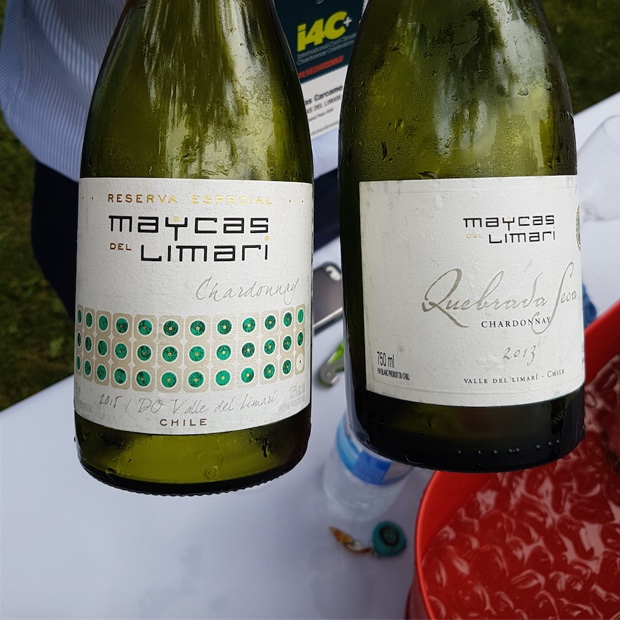
Maycas del Limarí Chardonnay Quebrada Seca 2013, Limarí Valley, Chile (331520, $36.00, WineAlign)
Maycas de Limarí’s Quebrada Seca or “dry-cracked” makes reference to the fragmented soils, a place of low-fertility and chardonnay loving terroir. This spent 14 months in (30 per cent new) but it’s not just the extended barrel time that separates it from the estate’s Reserva. Vintage plays a significant role in conjunction with the soil and it teaches so much about the virtues of patience and time. No malo but high sapidity, lots of bite and the verdant, healthy life are borne out of poor fertility. This is life affirming chardonnay from harsh climes. Drink 2018-2022. Tasted July 2017 maycasdellimari #thevineagency wines_of_chile_canada @maycasdellimari The Vine – Robert Groh Agency @WinesOfChile

Joie Farm Chardonnay “En Famille” 2015, BC VQA Okanagan Valley, British Columbia (511113, Agent, $36.00, WineAlign)
The developed layers of fruit are well integrated and interwoven into the mildness of both barrel and tannin. The sweetness of that sun-kissed fruit leaves a lasting impression from what has been brought into being by a warm and impressionable vintage. Exemplary three or four year Okanagan chardonnay that shows off its charming sucrosity. Drink 2017-2020. Tasted July 2017 joie farm liffordgram #JoieFarm @joiefarm @liffordwineandspirits

Sneak peak in the @TriusWines Meunier with Craig McDonald and a true Niagara Grand Cru @coolchardonnay site #lincolnlakeshore #oliveiravineyards #vqa #wildferment
Trius Showcase Chardonnay Wild Ferment Oliveira Vineyard 2015, VQA Lincoln Lakeshore, Ontario (199273, $36.20, WineAlign)
When you consider the level of quality provided by the Wild Ferment 2014 it would be hard to imagine raising the bar any further but this is what winemaker Craig McDonald has managed with his exceptional 2015. The accomplishment is purely based on one year older, wiser and complexities developed Oliveira Farm vineyard fruit, the holy chardonnay grail, Lincoln Lakeshore playground. The site sits along the QEW below the escarpment’s Twenty Mile and Beamsville benches, a recipient of glacial till and rocks left behind by an ancient river running from a lake. It’s a chardonnay wonderland. Intensity of fruit purity, fleshy and real, remarkably juicy and notably crunchy has increased, upping the pleasure game and turning the impression knob up to 11. The windmill generates more power while always maintaining a classic Trius level of finesse. Then you think on the wood integration, equally impressionable because acidity is sweet and refined. Dry extract is also impressive, not to mention a fineness of grape tannin. The site’s unofficial designation as a Niagara Grand Cru should be upgraded with status. There is no better time than the present and the Wild Ferment’s 2015 ability is proof enough. Drink 2017-2023. Tasted July 2017 triuswines @triuswines

Exquisite dish by Frank Dodd @TriusWines #houseofchards #i4c lunch . . . Lake Huron Whitefish, lobster and scallop sausage, crab croquettes, asparagus, sweet peas, celeriac slaw, seabuck
Trius Showcase Chardonnay Wild Ferment Oliveira Vineyard 2014, VQA Lincoln Lakeshore, Ontario (199273, $36.20, WineAlign)
With fruit from the Niagara chardonnay mecca Oliveira Vineyard and the addendum of yet another stellar varietal vintage it is this Craig McDonald speciality that helps to steal the show. Striking out with near-raging acidity (pushing and possibly exceeding the 8 g/L mark) the Wild Ferment is one of the most formidable expressions of 2014, if not ever. All the moving parts work fervently and impressively as if the motor is running and the machine careening around the speedway. To keep composure it is texture that brings about grounding, balance and cadence, from obvious lees perfection and 30 per cent new wood plus the rest forged by two to five year old barrels. This is creamy, energetic and tannic chardonnay, all conspiring to express itself with both weight and poise. From a maker who’s been around the block a few times, the ’14 WF will go the distance. And you can start now. Drink 2017-2024. Tasted at Cuvée, March 2017 an #i4c July 2017 triuswines @triuswines

Esterházy Il Magnifico Blanc de Blancs Brut 2013, Burgenland, Austria (511378, Agent, $37.95, WineAlign)
Esterházy was a Hungarian noble family with origins in the Middle Ages, generally bilingual, in Hungarian (as a result of their ethnicity) and German (as they were aristocrats of the Austrian Empire). The family was intrinsically tied to the Austrian composer Joseph Haydn (master to Beethoven) and the estate today shares the same desire; to epitomize the aims and achievements of the Classical era, Hadyn for music and today, Esterházy for contemporary Austrian wine. General Manager Stefan Tscheppe spins a tale of Nikolaus II, the wealthy late 18th and early 19th century prince who lived a charmed life, nicknamed by his sisters as “Il Magnifico.” The namesake sparkler is done in a Brut Nature style, 18 months on the lees and is possessive of a distinctive grapefruit liqueur. The vines grown on limestone-based soil and this is clearly picked on acidity, in the first to second week of September. Il Maginifico may not carry the weight or tone of Hadyn’s The Creation but it is a most excellent Blanc de Blancs composition. Drink 2017-2022. Tasted July 2017 #esterhazy @esterhazywein austrianwine Esterhazy Wein @NaturalVines @oesterreichwein @AustrianWine @BirgittaSamavar Marzia Gallo @austrianwine
Pearl Morissette Chardonnay Cuvée Dix Neuvième 2014, VQA Twenty Mile Bench, Niagara Escarpment, Ontario (303602, Winery, $38.20, WineAlign)
It’s never easy to follow up greatness, even for this top quality Niagara chardonnay and yet I am almost ready to believe that this Dix-Neuvième delivers more richness of fruit than its predecessor. The stoicism lost from 2013 is woven texture gained, here in a tapestry of pure chardonnay fruit, beeswaxy, faint honey and an almost imperceptible reductive environment. Francois Morissette and Brent Rowland clearly had texture earmarked as the raison d’être for this ’14, almost to a fault but the result is bloody delicious. No Pearl Morissette wine ever gave of itself so young, so fast. Immediate gratification be darned there will be five blessed textured years ahead. And then the honey will set in. Drink 2017-2022. Tasted June and July 2017 pearlmorissette Pearl Morissette
Domaine Laroche Les Vaudevey Chablis Premier Cru 2014, Ac Burgundy, France (416057, Agent, $38.95, WineAlign)
A compressed chardonnay that strikes as a passion play between herbs and limestone and no surprise that the spoils go to the latter. The citrus is gassy, rising, bathed in atmosphere. The structure is predicated on stone, rock and struck flint. Chablis of metal and essential minerality, discovered and defined. This slow-ripened chardonnay will evolve one year for every month contributed by its growing cycle. Drink 2016-2026. Tasted June 2016 and July 2017 #domainelaroche selectwinemoments Domaine Laroche, Chablis

Mackenzie Brisbois, Trail Estate Winery
Trail Estate Chardonnay Unfiltered 2016, VQA Prince Edward County, Ontario (Winery, $39.00, WineAlign)
Auspicious beginnings transcend the customary for Trail’s winemaker Mackenzie Brisbois, case in point exhibit A with her first fledged County chardonnay, a whole cluster pressed, native yeasts and full malolactic beauty. Only a single barrel was made of this really tight, taut and youthfully vituperative one but it will mature, self-reflect and turn into a respectful and generous wine. There is a toasty note that currently smoulders in the glass but that too will gently peel away. The terrific render of acidity couples at present and will melt with the rest of the intensities. This is the estate’s first kick at this County cru, “things are going great, and they’re only getting better.” The future’s so bright I gotta wear shades. Drink 2018-2022. Tasted July 2017 trailestatewine mackbrisbois @TrailEstateWinery Mackenzie Brisbois
Hidden Bench Chardonnay Felseck Vineyard 2014, VQA Beamsville Bench, Niagara Peninsula, Ontario, (276261, $39.20, WineAlign)
Unction and creaminess, lost in a chardonnay dream because to nose it’s a sweet, floral, demure thing. Lees apparent so you can smell the work in progress and feel the texture. But it’s wound loosely tight with just enough give to make it so readily available. Beautiful little wine though I can’t help but imagine there’s more single-focus structure than a blind taste wants to give. Hope to come across this hard to get beauty again someday soon. Drink 2018-2022. Tasted blind at NWAC17, June 2017 and #14c, July 2017 hidden bench @Hidden.Bench
Norman Hardie Chardonnay Niagara Unfiltered 2015, VQA Niagara Peninsula, Ontario (184432, $39.20, WineAlign)
Norman Hardie’s 2015 Niagara is a reductive yellow goddess dressed chardonnay, connected to the fullest of its fruit, (slowly developed) creamy malolactic, touchstone acidity and grape tannic ability. There is this understated feeling in the throes of richness that the winemaker and the place always seem to agree upon. The display window celebrates and proudly promotes the somewhereness of this ’15 chardonnay. It is never a matter of Niagara versus County, there is little substance to be found, nor is it a necessary point of discussion worth investigating. It’s just highway that separates the two. Both are children of the Norm, both deserving of estate credibility and here, with this next excellent Niagara, taking the Hardie progression one step further. Drink 2017-2022. Tasted June and July 2017 normanhardiewinery Norman Hardie @NormanHardieWinery

Domaine De Mauperthuis Chablis Premier Cru Montmains 2015, Ac Burgundy, France (511071, $39.95, WineAlign)
Winemaker Stéphane Saillet’s is a highly compressed, pure and precise Montmains. No wood was used because of the vintage, a season from which the ripe and developed fruit could clearly defend and take care of itself. Carries the essential tenets of texture and chew. Stéphane notes that the challenged ’16 will have some barrel (foudres) because “in the beginning there was nothing,” an important omen with which to help reflect on the fantasy and fantastic effort found in his 2015. Drink 2018-2023. Tasted July 2017 #mauperthuis vinsdechablis vinsdebourgogne nicholaspearcewines #Mauperthuis Vins de Bourgogne / Burgundy wines Nicholas Pearce
Malivoire Chardonnay Moira 2014, VQA Beamsville Bench, Niagara Peninsula, Ontario (Winery, $39.95, WineAlign)
Moira delves much further into the spice with a wood feel into texture, piquancy, savour, sapidity and on repeat in all of the above. The length stretches further as a deeper, more intense expression of Beamsville Bench terroir. It will need to settle and integrate with another year in bottle. Drink 2018-2022. Tasted July 2017 malivoire shirazmottiar @MalivoireWine
Lightfoot And Wolfville Chardonnay Ancienne 2014, Nova Scotia (Winery, $40.00, WineAlign)
The name Ancienne and the proximate irony appraised is not lost for its translation as endemic or indigenous for wines made from Burgundian grape varieties raised on Nova Scotia soil. The sophomore chardonnay speaks in a vernacular a year to the wiser but at the expense of excitement, which is actually a good thing. A step back taken will result in two going forward, as I shall explain. The same regime exercised mimics the ’13, of 20 per cent new, 18 months in barrel, but a slight course altered with some reductive play in ’14, as an experiment but also as a plan. There seems to be more lees richness and spice notes that flit like direct darts on the palate. Different clones are harvested at different times, so now the vinifications are staggered and layered, which really shows on the stratified and almost germinating palate. Another year older allows these vines to bring diversified variegation, more Nova Scotia and as a consequence, less winemaking. The growth here is fascinating and enlightening. In the interim it may compromise the flavour profile and the wow factor but in the long run it is structure, longevity and impressibility that will give the green light to estate grown, Minas Basin success. Drink 2017-2021. Tasted June 2017 lwwines jhortonns rachelhopelightfoot winesofns @lightfootandwolfvillewines Rachel Lightfoot @winesofns
Bachelder Wismer Vineyard #2 “Foxcroft Block” Chardonnay 2013, VQA Niagara Peninsula, Ontario (512178, Winery, $44.95, WineAlign)
Deeper and deeper into the micro terroir we go, with thanks to the monk himself so strike me down as a cool climate instigator if you must but Thomas Bachelder takes on the challenge, fresh and new as ever. This Wismer Block dubbed #2 is purely and expressly Foxcroft, a divided up for purchase and worked by many vineyard. Few do it justice like the unstressed symbiotic relationship between Bachelder and grower Craig Wismer. From the ideal session of 2013 we have creamy and cracked, fragmented mineral intensity in opposite attitude to Wismer-Parke but more on the fleshy and structured side. The wood is bigger and more integrated, the flesh ripping and of the sort of musculature that shows no aggression nor needs any explanation. It’s just big and beautiful, not to mention an ambassador for cool. Hello world. Drink 2018-2025. Tasted June and July 2017 bachelder_wines liffordgram @BachelderWines @liffordwineandspirits
Henry Of Pelham Cuvée Catharine Blanc De Blanc ‘Carte Blanche’ 2012, Short Hills Bench, Ontario (Winery, $44.95, WineAlign)
Reserved for Ontario sparkling but indicative of a bench-steppe foothills style because it just has that spark. Very much a ball of tart and compressed energy and so intense. A middle of the norm dosage at 8 g/L RS is managed in perfect oscillate with equal and opposing acidity at 7.3 TA. Such precision, ease and high quality serviceability is the equanimity quotient delivered by the estimable work ethic of winemaker Sandrine Bourcier. It boils down to recognition. The benchmark for Niagara Peninsula year-dated sparkling wine juices ripeness out of this warm vintage to perpetuate Cuvée Catharine’s unparalleled fizz consistency. Drink 2017-2021. Tasted July 2017 henryofpelham Henry Pelham
Lightfoot & Wolfville Blanc De Blanc Extra Brut 2013, Nova Scotia, Canada (Winery, $45.00, WineAlign)
Josh Horton and Rachel Lightfoot presented an early, less leesy glimpse of their 100 per cent estate chardonnay at i4c in July of 2016. It was a different animal than this recently disgorged (late February/early March) sparkling wine. The Extra Brut lives up to its designation, from fruit grown on the shores of the Minas Basin under the auspices of a markedly warm year with exceptional phenolic ripeness and 25 per cent malolactic gain. The time relative to texture lees accumulation is approximately 40 months and it’s an accurate representation of Nova Scotia low and slow. The flavours are wisely developed ripe and spicy, leaning into a moment or two of oxygenation, but seemingly richer than the amount of lees time that was given. Now emerging from the shell of not just a warm but a great chardonnay year (as previously proven by the Ancienne released two years ago). The notion here is of a sparkling wine that has been brought home, a B de B that you need to get to know. There are layers and layers of character that fold and unfold. The precision, focus and rendering is citrus tamed, mouthfeel in perpetual expansion and contraction, length linear and elastic. And it’s just the beginning. Drink 2017-2023. Tasted June and July 2017 lwwines jhortonns rachelhopelightfoot winesofns @lightfootandwolfvillewines Rachel Lightfoot @winesofns
Bachelder Chardonnay Johnson Vineyard 2013, Yamhill Carlton District, Oregon (416644, Agent, $45.00, WineAlign)
The best of the barrels, always remember the soil, the soil Johnson Vineyard chardonnay will send you spiralling deep into thought, like it or not. It’s origins in Jory, sedimentary soils draw energy from a source unseen, dug down into where the ancients dwell. Thomas Bachelder monkifies the soil plant matrix made to transmit minerality. “It’s as much about photosynthesis in the new world but minerality is still apart of it. Jory soils in Oregon bring a salty tang, a savour. It’s true.” Bachelder speaks of a wisdom once revered, now questioned and he’s fine with needing to work for a living. The Johnson chardonnay is beautifully tart, rich and complex, biting, full of energy, so cool, taut, structured and even still a bit reductive. But it really is pressed, juiced and spirited with lime, for success and to linger, for a decade post harvest, perhaps for even longer a quality length of time. Drink 2018-2023. Tasted July 2017 bachelder_wines liffordgram @BachelderWines @liffordwineandspirits

Norman Hardie Chardonnay Sans Soufre 2015, VQA Niagara Peninsula, Ontario (Winery, $45.00, WineAlign)
Says Norm with matter of factness, as he always does, “it’s the regular Niagara chardonnay, but without sulphur.” So you ask the question up front? Is the unsulphured so different than the other? To the naked senses, no. The charm, power and generosity are all there. It took a full year to pass malolactic inspection. So why do it? Because it reminds of 2012, same slow malo, same deferential and determined kind of wine and the answer comes from something Norm says. “I didn’t have the guts in those days.” But he has them now and yet the decisions imparted this Sans Soufre will be different, with more guts and glory, say in 2022. Perhaps there is a softness about this naked one, something cotton candy about its aromatics and its texture. It’s fine-spun, ethereal and dissipating. It does not argue but you sense it’s possessive of an organized, controlled tension. But don’t be thinking this isn’t a planned piece of parenthood. Did I mention the tannic presence on the palate? How about the wind-up, into tart and the stiff breeze that blows through as if it’s already turning to fall. Drink 2017-2022. Tasted Twice, June and July 2017 normanhardiewinery @normhardie Norman Hardie
Tawse Robyn’s Block Chardonnay 2013, VQA Vinemount Ridge, Ontario (Winery, $45.95, WineAlign)
The temptation and the desire to compare Robyn’s Block and the other Tawse chardonnays is unavoidable but in 2013 it’s a fruitless exercise. Neither warmth, tropical fruit, cold, rain, terpenes or high acidity are hallmark traits of Robyn’s Block 2013. So what is? When I tasted through Robyn’s barrels with winemaker Paul Pender back in April of 2014, the Mercurey (one year-old, CLL toast) from the oldest (32 years) vines off of the richest site worked wonders in tandem with new oak. Very primary, fermenting notes foretold of a reigned in, restrained Robyn. The Mercurey (new) barrel gifted tang and girth into which the barrel disappears, with sappy toast on the back end. It too was quite young in its evolution but was rich, thick and dense. The Céres (Mineral) barrel brought exclamatory fruit and was ready to drink. All together and three years later these barrels have conspired for all of the above but if I had to sum it up in five words or less I’d say Robyn is “full of energy, texture and beans.” She will turn out creamy notes as the decade turns but always maintain her sense of restraint, running sap and fleshy tone. The wine is nothing if not a fascinating introspection into the history and the future of this block. Drink 2017-2023. Tasted April and July 2017 tawsewinery @tawsewines

Sperling Vineyards Blanc De Blancs Brut Nature 2013, VQA Okanagan Valley, British Columbia (511329, Agent, $47.00, WineAlign)
There is no dosage in this directly motivational Blanc de Blancs and plenty of potential palate weight with thanks to 30 months spent on the lees. There is something top single-vineyard cru Alsatian about the savoury and searing coolness in this style, as if it were more than just the sum of chardonnay parts, like some hypothetical pinot blanc and perhaps auxerrois. There is some reductiveness, a lovely washed rind cheese, lemon scrape melted into curd and fine bitters. The flavours are really quite lemony tart. Striking really. School of Cool moderator Karen MacNeil described this like “a nun in catholic school, severe and a bit starched. I’d like to try it a bit sweeter, to mollify the tension.” Though the consensus is one that sees it under-dosed, you have to admire Ann Sperling’s “decision based on lees contact time.” To make it longer. The sharp, angular edges are a by-product of its aggressive nature but like sémillon in its lean and gaunt youth this B de B will develop some faux honey and petrol with age. Drink 2018-2022. Tasted twice, July 2017 @SperlingVyds @AnnSperling sperlingvineyards cruwine Sperling Vineyards Ann Sperling
Stratus Chardonnay 2014, VQA Niagara-On-The-Lake, Ontario (307645, Agent, $48.20, WineAlign)
The Stratus 2014 is more reductive than usual, in its case more of a vintage-related affair than others. The “Burgundy method” is employed, but in a “Niagara style” notes winemaker J-L Groux, that is with native yeasts and a pick that can’t be too early. The wine saw nine months in (25-50 per cent new) oak. This ’14 is Groux’s last of the chardonnay mohicans because in 2015 it will be bottled with lees. This ’14 is nothing if not bloody delicious, ripe orchard fruit swelling, of mild acidity and seamless texture. Drink 2017-2021. Tasted May and July 2017 stratuswines @StratusWines
Southbrook Poetica Chardonnay 2013, VQA Four Mile Creek, Ontario (366500, Agent, $49.95, WineAlign)
Always Ontario’s outlier, eccentric and non-conformist chardonnay and I say this with complimentary, best of intention flattery. The 2013 vintage is simply chivalrous to chardonnay and in Poetica’s corner, a perfect calm case of preux meets elegante. Here is a chardonnay of inherent oxidative wisdom, from cloud cover, cool, long breaths of Niagara air well into the elongated autumn and the address for what I refer to as “the age apparent one.” The iconoclast Poetica ideal conforms because it is matched with equal breadth by richness of fruit and confirms the way Ann Sperling makes her signature wine. Tasted blind my first guess would put this at five years old because of the exuding warmth so 2010 might just be the order. A 2012 Bench chardonnay might have also been the answer. But with Poetica the promise is like Meursault with uptown fruit, honey, vanilla, caramel, a Niagara vapour and ethanol. Such a telling display that only Poetica can play. Drink 2016-2024. Tasted October 2016 and July 2017 southbrookvineyards thelivingvine @SouthbrookWine The Living Vine inc.
Viñas Ventisquero Tara Chardonnay 2014, Atacamas, Casablanca Valley, Chile (511337, Agent, $53.00, WineAlign)
Chile’s Atacama Valley frontier is one of the world’s great terroir expansions, a limestone soil-based flat, even further north than the Limari valley. Ventisquero’s winemaker Felipe Tosso has said that Atacama “breaks all the paradigms of what has been produced in the central-southern valleys of Chile.” The salinity in the land translates to notes in chardonnay of almost no precedence, like salty cotton candy and a fineness of acidity singular in chemical design and how it feels in the mouth. It’s like sucking on a stone lozenge that never dissolves. It’s relentless in its pursuit of fruit. Flavours coagulate liquid almond joy and transparent bitters but there is also a sweetness without definition, a simple limestone syrup that melts into the saltiness of the wine. Drink 2017-2021. Tasted July 2017 vventisquero univinscanada wines_of_chile_canada @VentisqueroWines @UnivinsCanada @WinesOfChile

Charline Drappier
Champagne Drappier Blanc De Blancs NV, Champagne, France (599860, Agent, $54.95, WineAlign)
Made with five per cent pinot blanc this faintly oxidatively-styled Blanc de Blancs is gingery-leathery and felt as if by extended skin contact. It’s both tannic and orange pith spritzy, also mixed in with grapefruit and lemon. Twenty-four lees-affected months bring body that is fleshy, corporeal and with acidity in charge on the palate. Quite a full fizz with some preserved fruit attentiveness. The dosage is healthy but simply flavour gifting at 7.1 RS because the sugar is a combination of beet and cane aged in oak for 10-15 years. It’s a special Drappier liquor dosage developed at the winery. What it brings is not just sweetness but a complex sweetener that has evolved and developed over time while it has aged. Drink 2017-2021. Tasted twice with Charline Drappier at #14c, July 2017 #ChampagneDrappier @FWMCan champagne_drappier champagnedrappier fwmcan Champagne Drappier Charline Dppr @FWMCan
Ravine Vineyard Reserve Chardonnay 2014, VQA St. David’s Bench, Ontario (Winery, $55.00, WineAlign)
The Reserve is 100 per cent estate fruit that spent 18 months in (50 per cent new) barrel. As it’s both barrel fermented and aged the variegation locks the fruit in so bloody tight so even now it’s reductive, smoky and flinty. A mineral chardonnay needs balance from over the top fruit and so track record, acumen and love will have it so. Marty Werner and Ben Minaker’s is a big, summery and gold platinum expression, very expressive, the two-lb steamed in seaweed lobster chardonnay, seemingly Meursault but just as likely from California. But as Ravine’s Reserve on the St. David’s Bench it is purely Niagara Peninsula. Fruit intensity, extract and controlled oxygenation shows off the best of what these men can do. It speaks to their efforts, knowledge accumulation, trials and finally to the culmination of their stamina. Drink 2018-2023. Tasted July 2017 ravinevineyard marty_werner benminaker23 Ravine Vineyard Estate Winery Martin Werner Ben Minaker

Adam Mariani, Scribe Winery
Scribe Chardonnay 2014, Carneros, California (511139, Agent, $55.00, WineAlign)
Adam Mariani raised his 2014 in concrete and though we are distracted and of course fully willing to think about the fruit (especially in contrast to his Skin Contact chardonnay) it is the texture that grabs most attention. That this solicits older world comparisons is hard to avoid, but it’s not a Burgundian thematic. Like the garnatxa by Ramon Roqueta Segalés of Domaine Lafou, Scribe’s is a wine that has succeeded in mastering the oxidation process and the scents are of ripe peach, fresh, without overdeveloped sugars but instead a sprinkling of ocean salt. Finishes with a savoury mix of lime, tonic and the liquor of distilled flowers. Drink 2018-2023. Tasted July 2017 scribe winery nicholaspearcewines Scribe Winery Nicholas Pearce

Familia Torres Chardonnay Milmanda 2014, Catalunya, Spain (332171, Agent, $59.95, WineAlign)
Miguel Torres Jr. tells us his wine comes from a great white wine vintage; cool and rainy, though not great for reds. “I don’t believe in miracles from the vineyard. You have to do some things in the winery,” he adds, like the use of bigger (300L) barrels and a 50 per cent malolactic goal. His chardonnay is a juicy, terpenic, honorary cool climate Canadian. That’s not to say it isn’t barrel rich, but it too speaks a language of the lively, crisp, crunchy and bloody delicious. This is full, satisfying, spicy and buttery teasing chardonnay out of Catalunya and few gallop along with such equine gait and grace, at least not from Spain, without either softening like butter or hardening like stone. Here the twain is met. Drink 2017-2021. Tasted July 2017 torreswines @FWMCan fwmcan @bodegastorres @FWMCan
Scribe Skin Fermented Chardonnay 2015, Carneros, California (511147, Agent, $63.00, WineAlign)
Scribe Winery’s Adam Mariani introduces his antithetical Californian from the Sonoma side of cooler Carneros up on Arrowhead Mountain in the northern part of the region, planted in 2007 abutting the Mayacamas range on volcanic soils. The grapes are skin-fermented cold (in the farenheit 50’s) with native yeasts for five to six weeks until mid-December but over the past several vintages they (the winemaking team) have slowly gained the confidence to get them above 100 days. One bottle (served too warm) is amiss and oxidative and this really accentuates the skin-settling tannins on the palate. A second is beautifully lively, tannins a bit tamed, acidity in tact and fruit concerned and even obsessed with all things lemon. The aging is done in concrete egg and with a correct bottle this is not oxidized, nor is it an orange wine but it most certainly is a Carneros expression of great interest. It should be dealt with young. Drink 2017-2019. Tasted July 2017 scribe winery nicholaspearcewines Scribe Winery Nicholas Pearce
Artesa Estate Reserve Chardonnay 2014, Carneros, Napa Valley, California (457143, Agent, $67.00, WineAlign)
Artesa or artisan, from the Catalan, an affirmation of style gifted in name from the Barcelona family Raventos. This chardonnay from the base of Mt. Veeder is 100 per cent estate fruit, adjacent Hyde Vineyards, all hillside sits of elevation, sun and under cover of omniscent fog blowing in from San Pablo Bay. The character is unmistakable French (50 per cent new) cream barrel warm and buttered, yet young and still a bit closed for business. The 16 months in wood requires double that to integrate but a fine mineral streak cuts through the caramel. Nothing shocking mind you, grace meets weight and toasted chestnut melds into sweet marzipan. The quality of fruit is unquestionably high and the seamlessness a given. The style can be yours. Drink 2018-2022. Tasted July 2017 artesawinery #andrewpellerimportagency @MerSoleilVineyard @Artesa
Chamisal Vineyards Chardonnay Chamise 2014, Edna Valley, California (511212, Agent, $86.00, WineAlign)
The aromatics are slow to reveal but if at first they are mildly mired in solder there is this sweet basil-herbal and lemon-balmy calmness on the entry. Takes some moments and then opens to a creamy, barrel-sweetened, tart and layered chardonnay. Looked at blind I’d certainly peg this as warmer climate, New Zealand perhaps but more likely and gracefully California. Indeed the Chamisal-Chamise of Edna Valley origins completes the picture. The first vineyard planted in the Edna Valley in 1973 near the Pacific and a long temperate growing season adds up to low and slow phenolic developed chardonnay. The warm vintage plus calcareous, clay-rich soil develops further flavour. Shy no more, the namesake flowering plant Adenostoma fasciculatum (chamise or greasewood) native to California bounds away with complex flavours. Drink 2018-2022. Tasted July 2017 chamisalvyd #andrewpellerimportagency @APImportAgency @Chamisal.Vineyards @APImportAgency

Vasse Felix Chardonnay Heytesbury 2015, Margaret River, Western Australia (674648, $91.00, WineAlign)
Heytesbury is Virginia Willcock’s top chardonnay and while it is one of Australia’s most iconic wines, it may never be made the same way twice. In 2015 the élèvage is in French oak for nine months (57 per cent new and 43, one to two years old) but no malolactic was encouraged. That’s a non-committal way of saying (and Virginia did in fact say) there was no malo in 2015 simply because it was not a vintage in which the acidity needed to be tamed. So with fruit so pure, strong and expressive, what else is there to say? Simply that you would be an idiot to tire of a fresh herb garden, blue slate shoes, ripe pomelo, a wedge of smoked cheddar, fresh scones and a crunch of mellifluous honeycomb. Heytesbury will gift all of this and more. Drink 2019-2027. Tasted July 2017 vassefelixwines margaretriver @vassefelixwines @MargaretRiverWineRegion @margaretriverwines1
Benjamin Bridge Méthode Classique Estate Blanc De Blancs 2013, Nova Scotia, (Winery, $119.50, WineAlign)
Tasted from a bottle disgorged in May 2017, there alights a plugged-in, three-pronged, dazed, charged and enchanted energy about the Bridge’s ’13 Blanc de Blancs. The history of go it alone pure chardonnay is a relatively short one for the estate so this quickly makes up for lost time or rather with haste sets the timer and heads out at first light. “Like sittin’ on pins and needles, things fall apart, it’s scientific.” Wild, of talking heads temper and yeasts, done up in demi-muids, with a wilder secondary fermentative push riding on the coattails of the primary fermentation. Everything in this wine is a productive child of the vineyard, of no third party sugars or consultations. “How do you do that without making a Pétillant Naturel,” I wonder aloud. It’s a second ferment, non-contiguous is the reason, even if the former is both influencer and mentor to the latter. It certainly falls under the category of “micro-cuvée. Like its cousin and predecessor (Blanc de Noirs 2011), this ’13 BdeB is mired intensely inward within its own specificity and is not so much a sparkling wine with competitive soul. It is a pure representative of chardonnay grown in Nova Scotia for one purpose. So let’s talk about true stories and wild, wild life. “You get on board anytime you like.” Drink 2018-2024. Tasted July 2017 benjaminbridge caveman__jones winesofn @benjaminbridgevineyards @benjaminbridgevineyards @winesofns

Cuvée des Amis in grand format from le grand ami @normhardie at an #i4c @coolchardonnay grand tasting dances and trips the light fantastic with unconscionable concentration.
Norman Hardie Chardonnay Cuvée Des Amis 2014, Prince Edward County, Ontario (Winery, $150.00, 1500ml, WineAlign)
As exceptional as chardonnay may have seemed from out of the 2013 Ontario vintage you haven’t lived or loved until you get a taste of (only in magnum format) Norm Hardie’s 2014 Cuvées des Amis. This chardonnay attacks and ascends, recalibrating the inner workings of the brain and how it develops conceptualization. It is a state of the art and all-knowing elixir to remind that ’13 was a vintage with profitable yields and a generously stretched canvas on which to practice on, for when things begin to get real. The CdeA spent 18 months in barrel, the first 12 (in 35 per cent new), the next six in neutral and the last six in stainless steel on the fine lees. The spin class in the mouth manages agility, dextrous, furtive movement and completes many pirouettes. The dance is pure joy but the intensity is equally to disturbingly intrusive, suggesting more settling time is necessary. The flavour pearls are delicate and come straight from the oyster so they carry salinity, power and brine. Pure lemon essence is received by intravenous injection. Sumptuous is translated from Hardie-speak as a four-letter, Prince Edward County word. It doesn’t get more real than right here, with the best fruit, the tripping of the light fantastic, previously unheard and unseen unconscionable concentration. Drink 2019-2025. Tasted twice, June and July 2017 normanhardiewinery @normhardie Norman Hardie

Took all night but it was so worth it. Welcome to #i4c17 @coolchardonnay #ilivechardonnay
Good to go!

